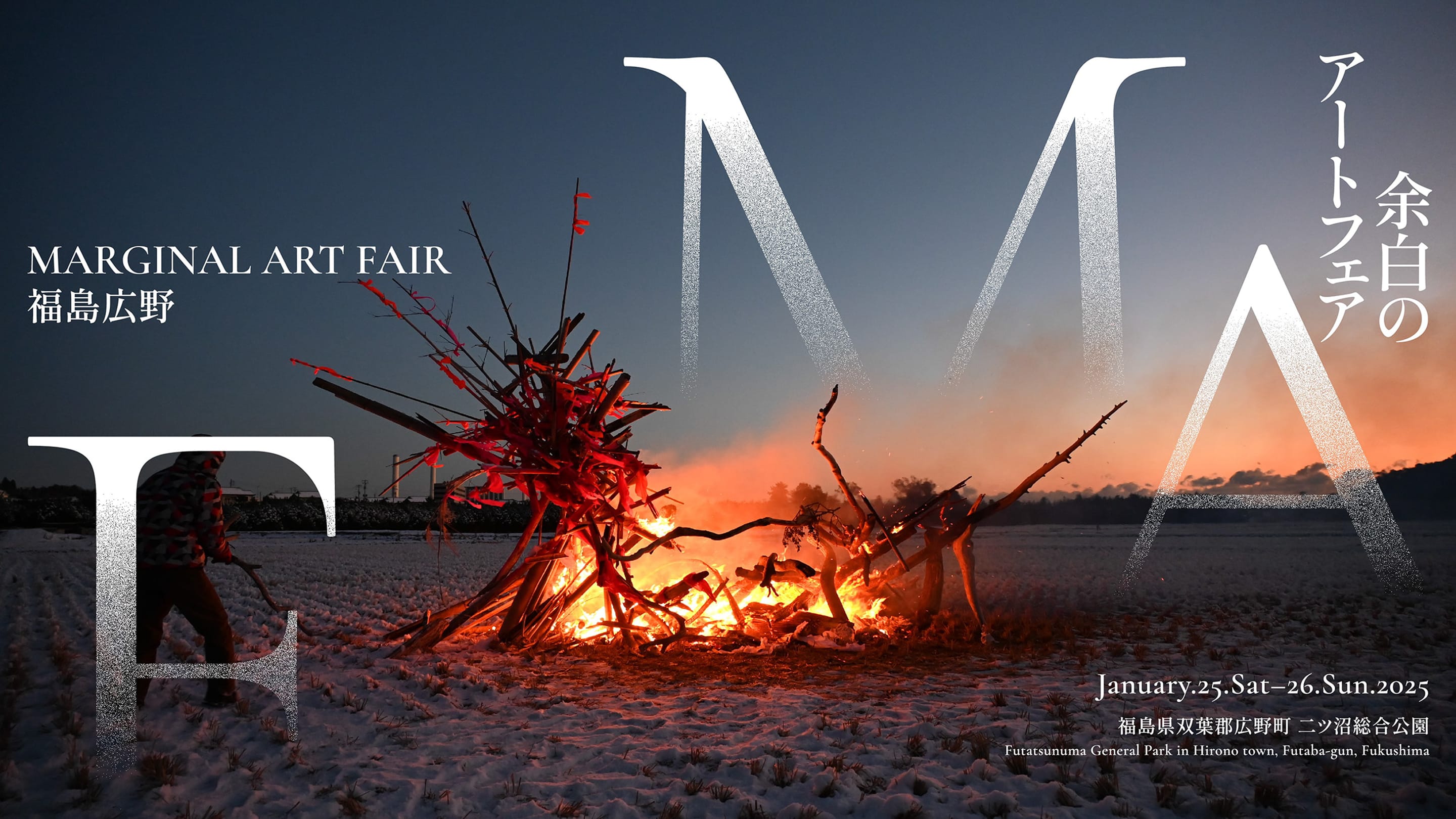
Marginal Art Fair Fukushima Hirono 2025
Jan.25–26, 2025 / Futatsunuma General Park of Hirono town, Fukushima, Japan
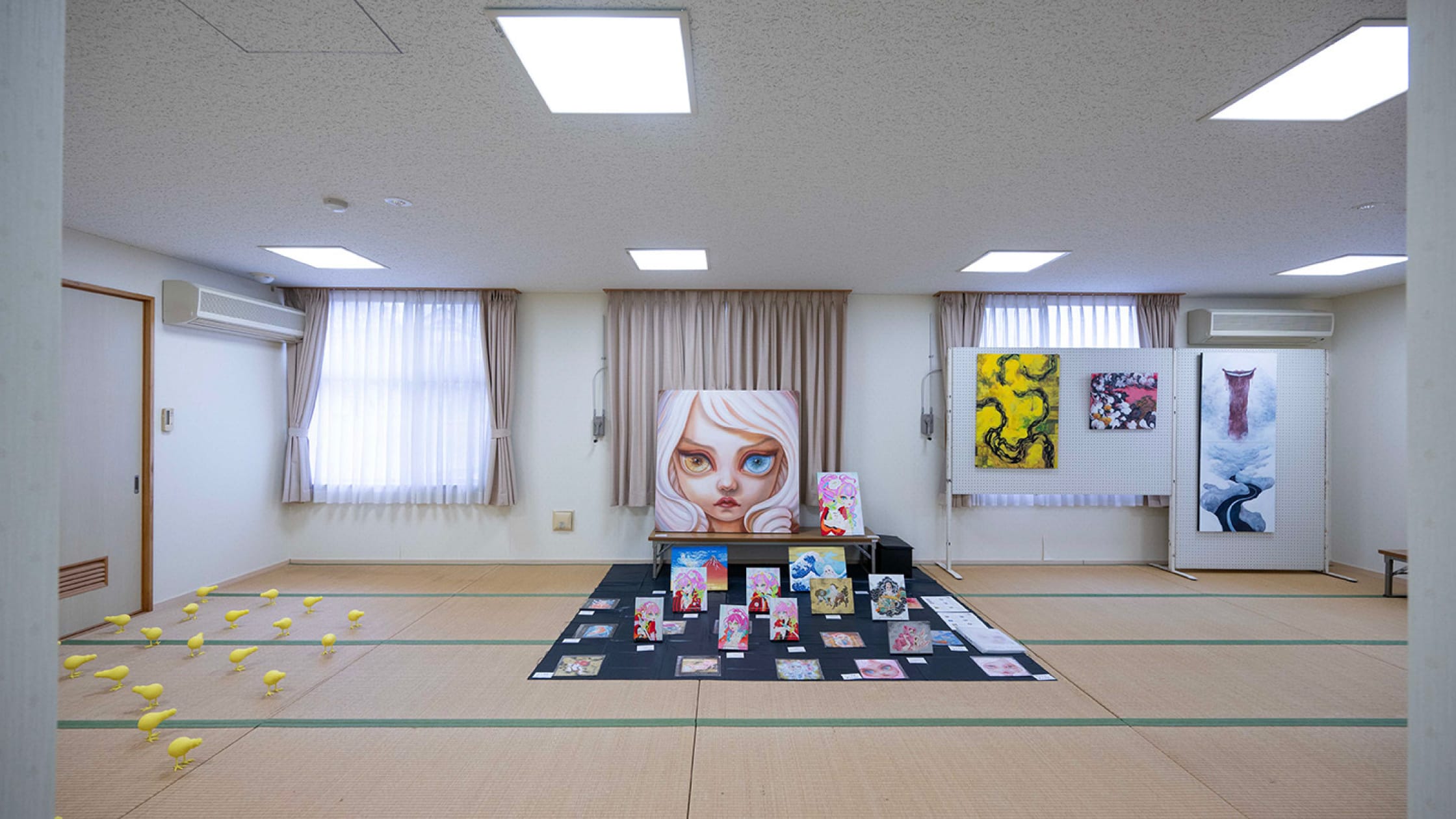
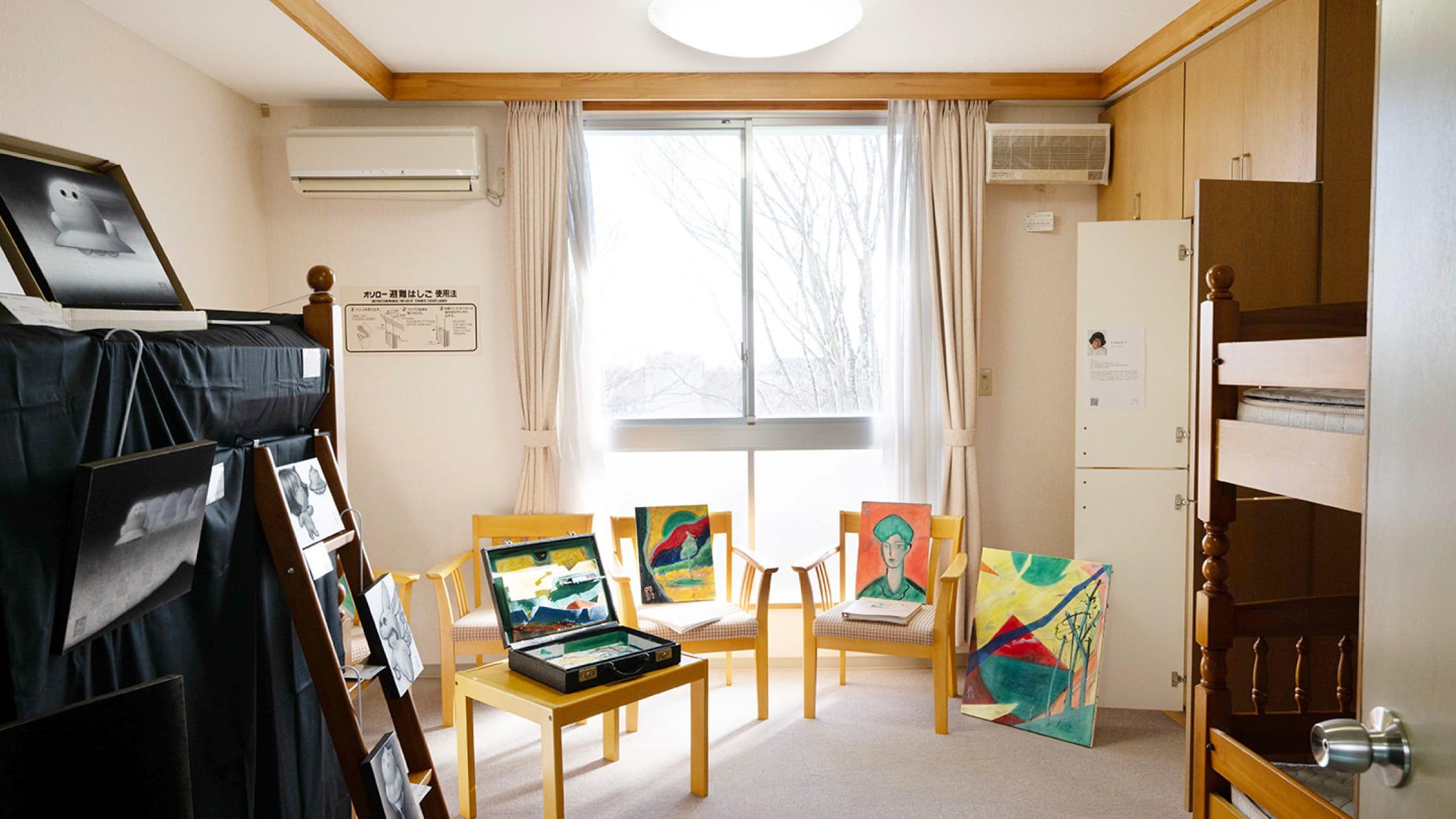
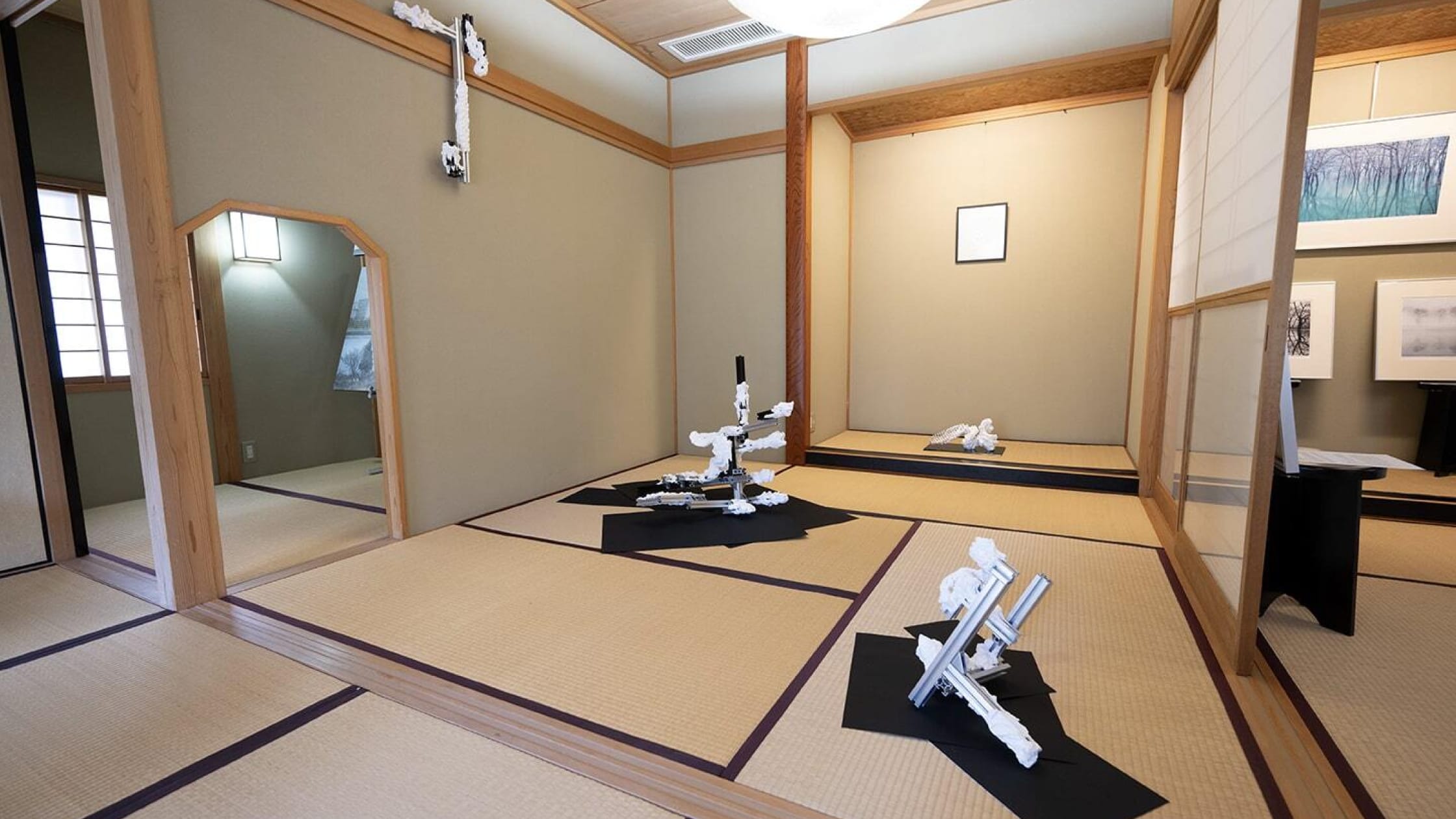
"Marginal Art Fair Fukushima Hirono" is a new art fair to be held at Futatsunuma General Park in Hirono town, Futaba-gun, Fukushima Prefecture. Artworks of more than 20 participating artists will gather at the venue. In addition, international open call will be held, inviting artists from Japan and abroad to participate. During the fair, there will be workshops to support artists and reception. Please enjoy the various artistic expressions and events.
Video
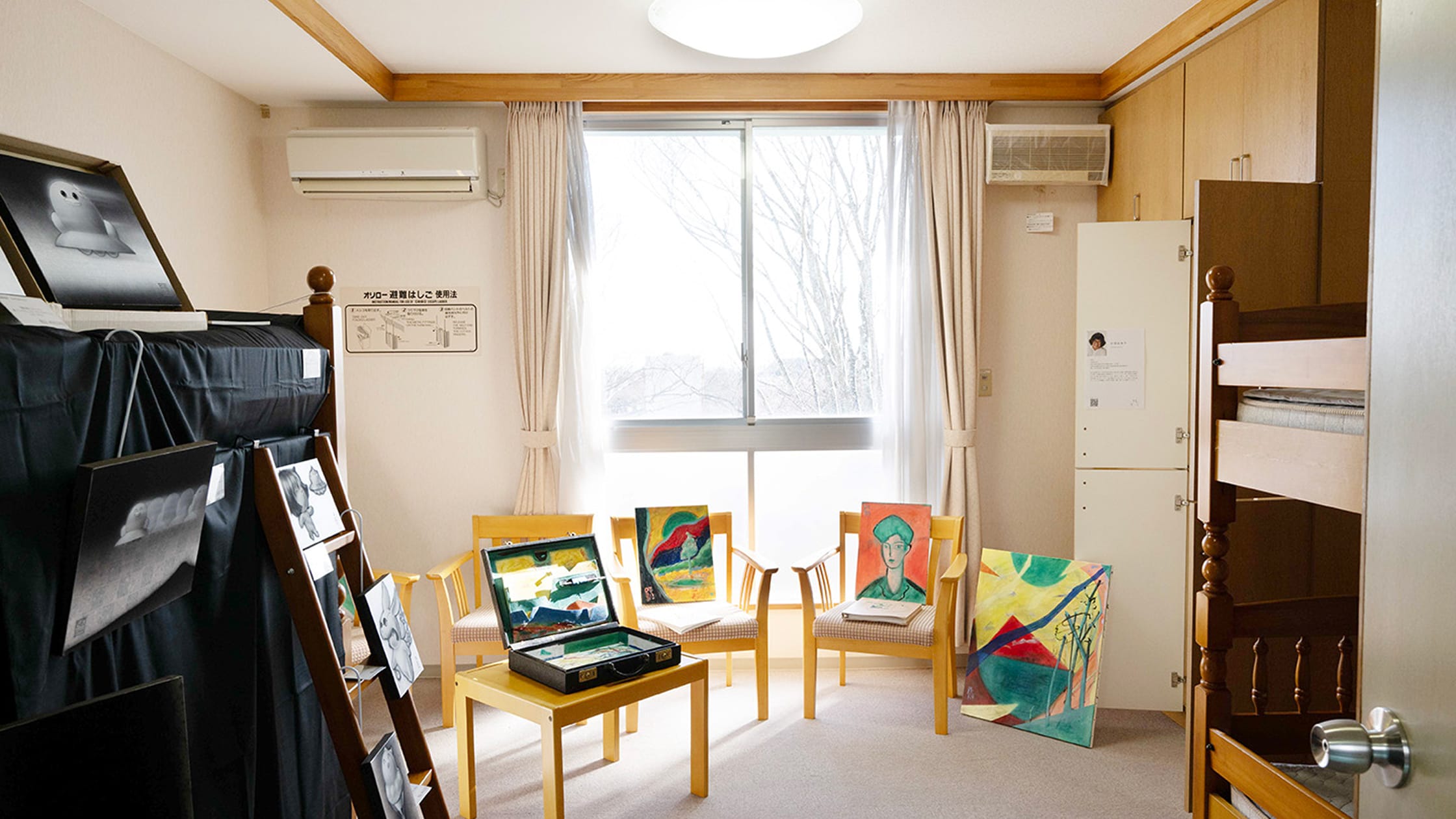

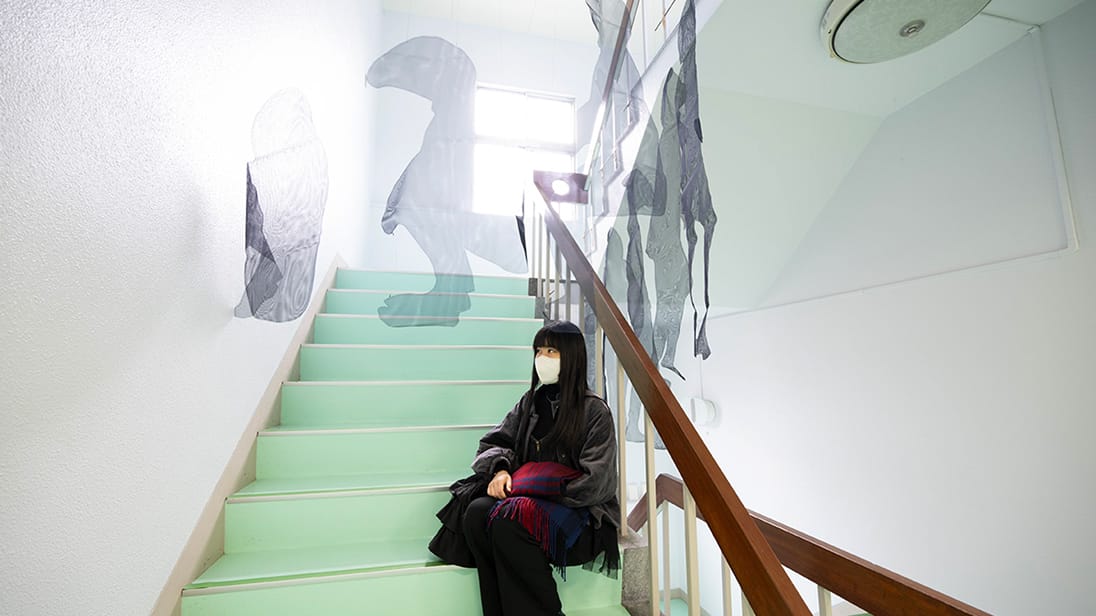
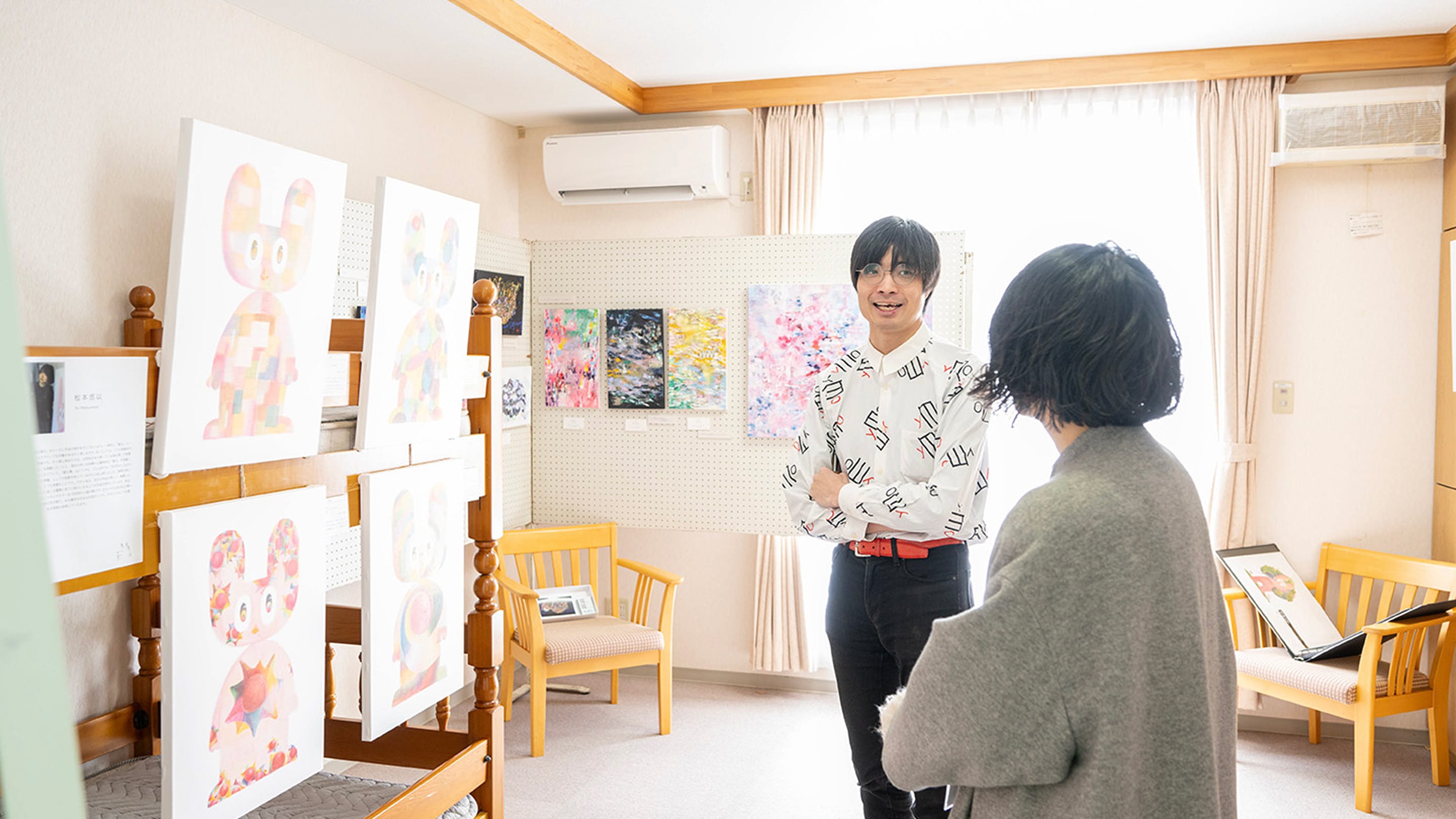
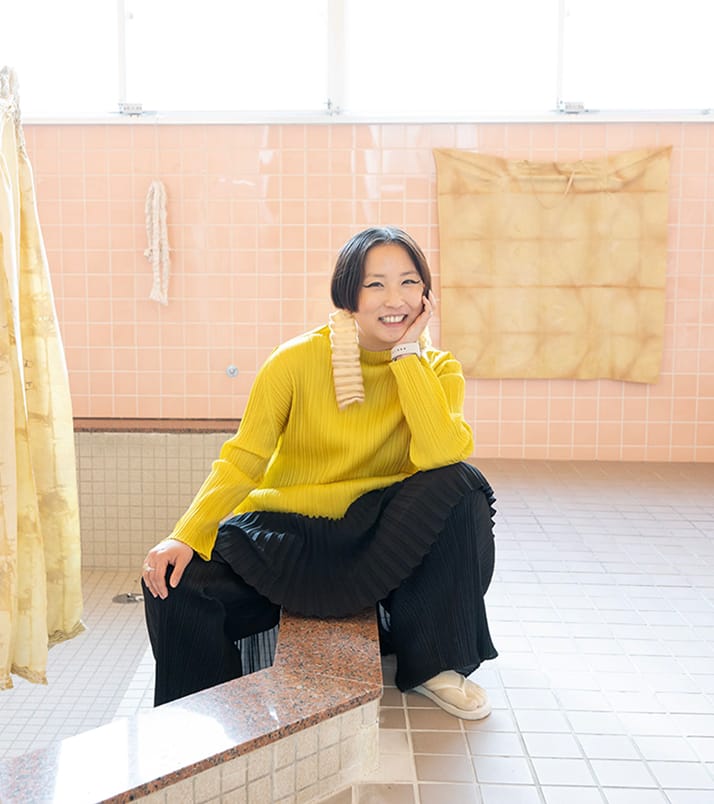
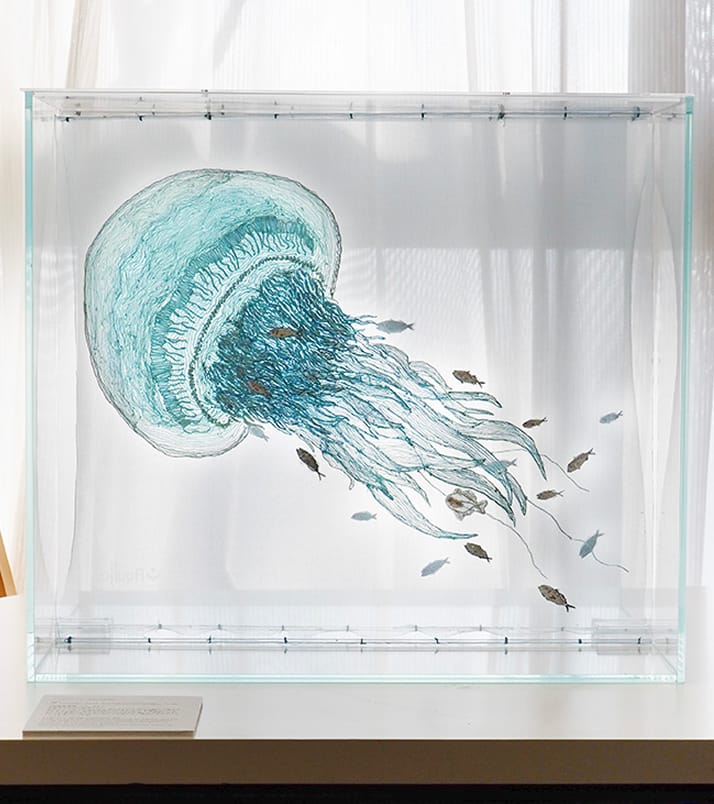
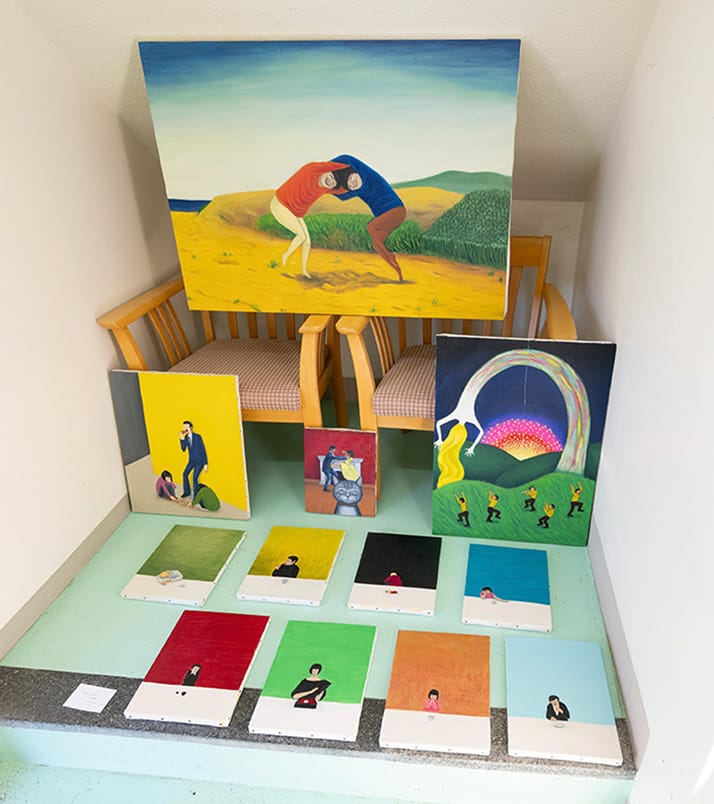
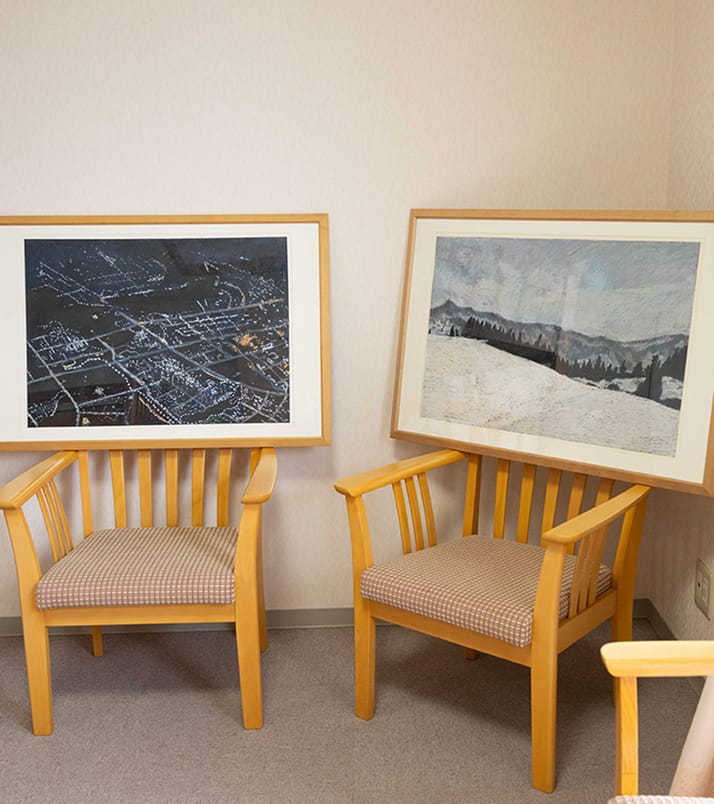
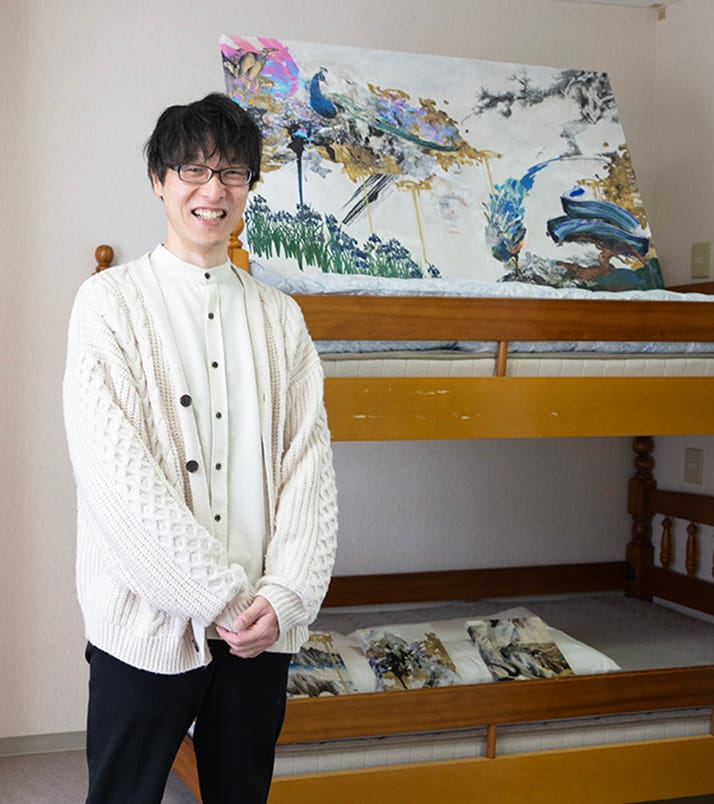
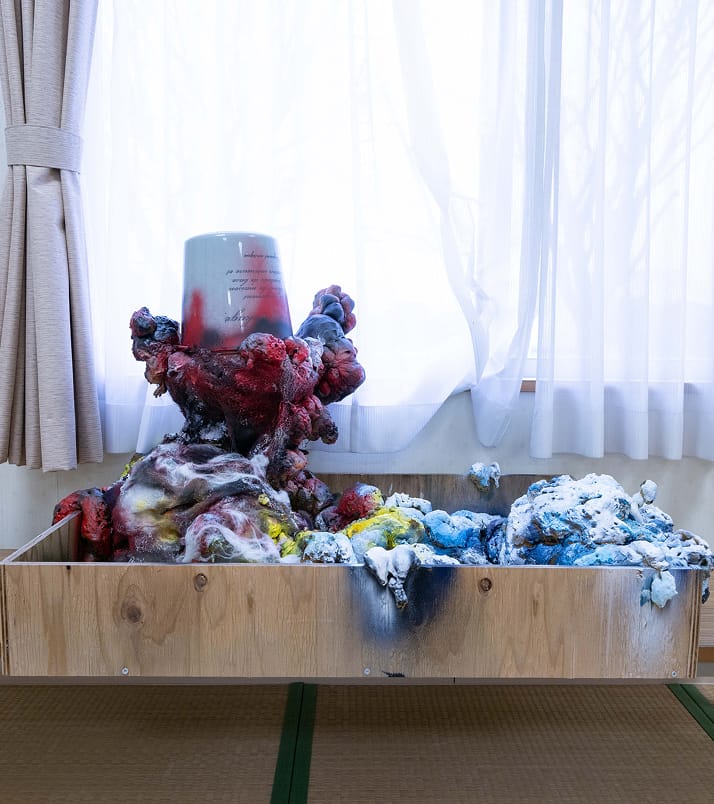
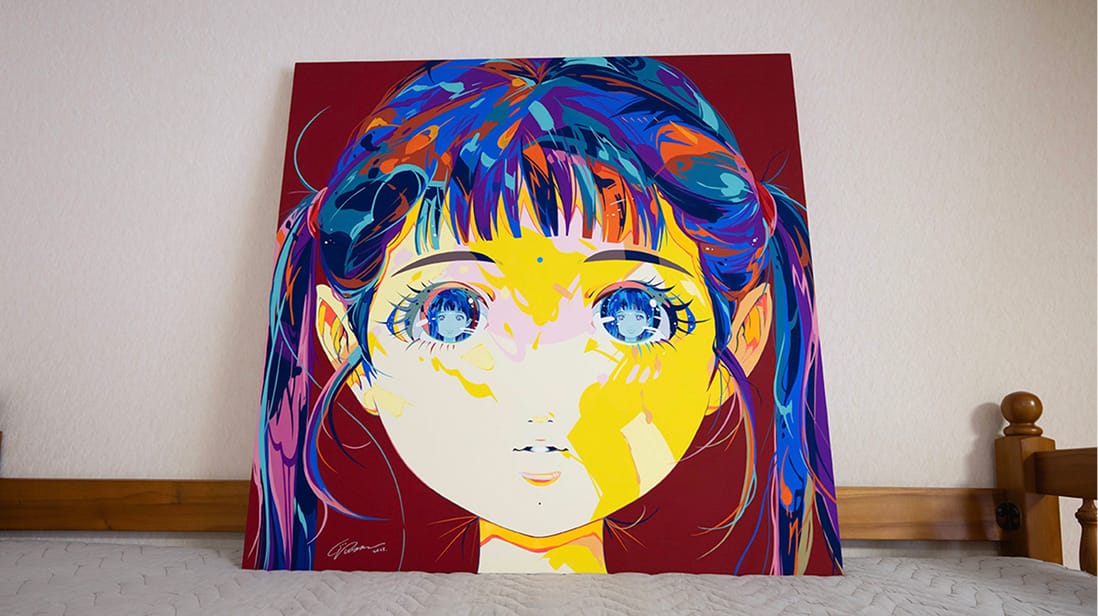
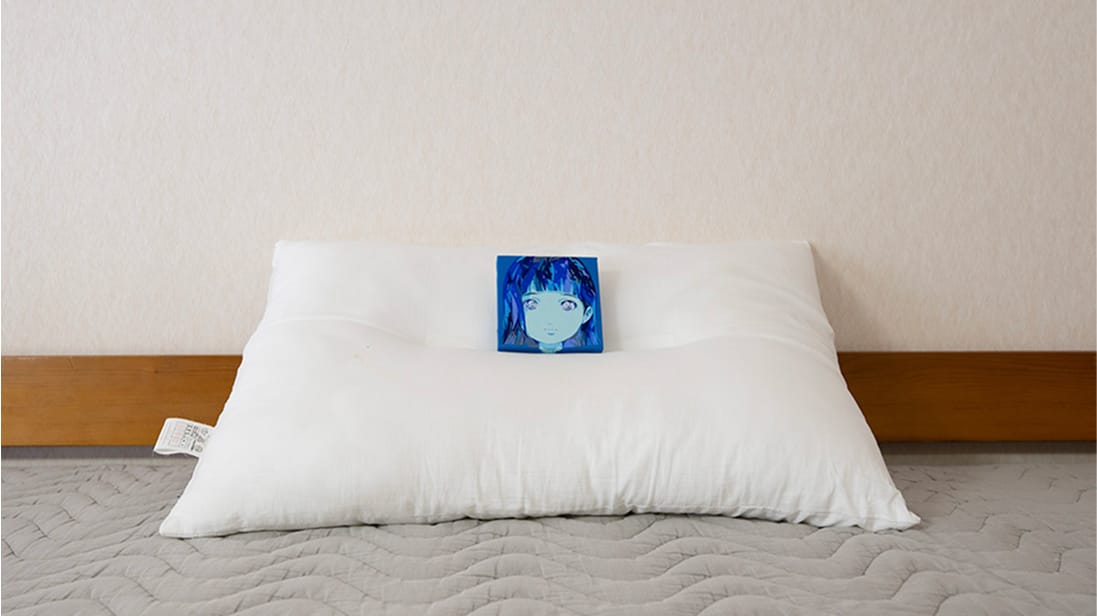
Artist
- Adam Fung
- AI☆MADONNA
- alfonatski
- Ao Miyasaka
- AOYAMA, Sae
- Ayaka Torimoto
- Emi Shiraishi
- Eriko SONE
- Fuma Kashiwagura
- FUZUKI ARAI
- Gazelle Pezeshkmehr
- Hatagiri Madone
- Hayato Takekoshi
- kasahara akito
- Kayoko Ishikura
- Kazuaki Koseki
- Kazuki Nishinaga
- Kirifude Imu
- KOKI SUGITA
- Koyama Hitoki
- KUMI OGURO
- Lida
- Lieu Le
- Mai Watanabe
- Maria Proshkovska
- MARINA
- Marron
- Marta Wyszyńska
- Michi Ogawa
- Mie Akatsu
- Minori Aoki
- mitsukoishii
- Miyuki SK
- Mizuho Eijima
- Moco Sawada
- Moka Yoshino
- Nadine Baldow
- Naoki Shibata
- NINIGI TIGER
- Roy Taro
- SEIKA TACHI
- Seitaro Yamazaki
- Selma Eduarda Pereira
- Takuya Ishikawa
- TANAKA Naoki
- Tomo Sakurai
- Tomohide Ikeya
- Wataru Hatano
- Yoko Mill
- Yui Matsumoto
- Yumiko Ishizuka
- Yuta Ikehara
- YUTA TAMURA
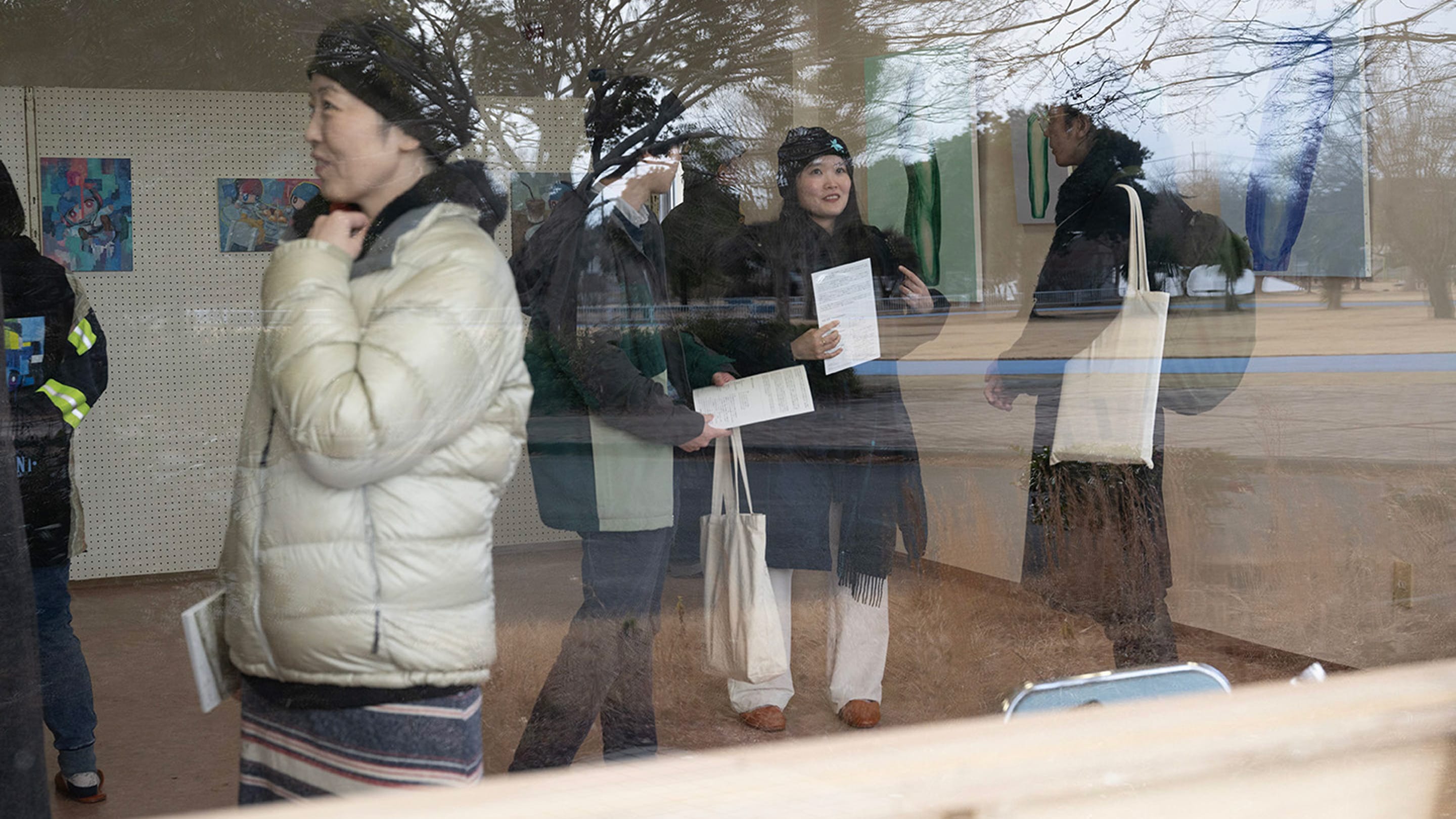
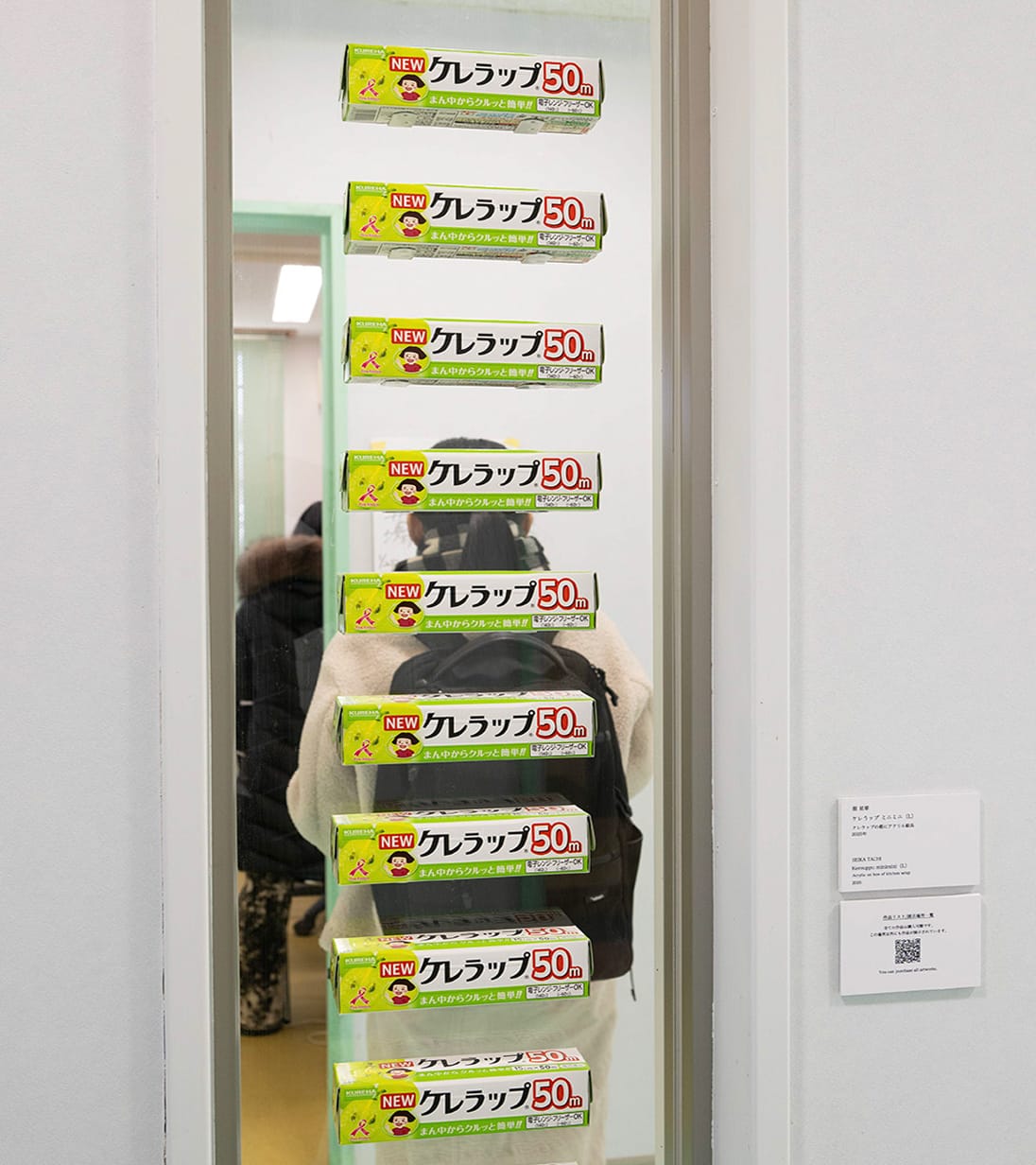
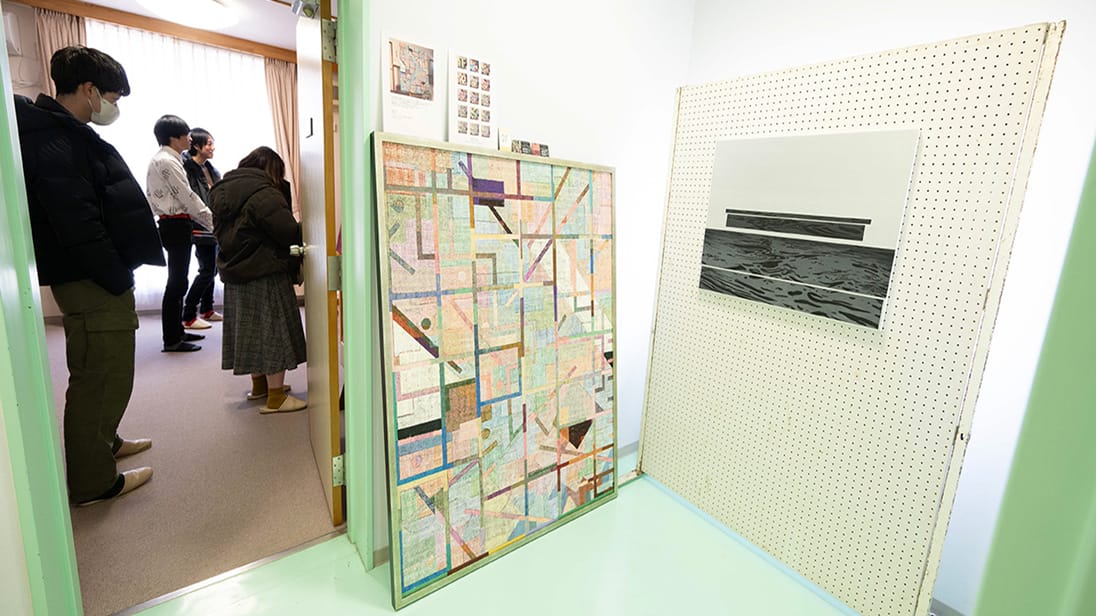
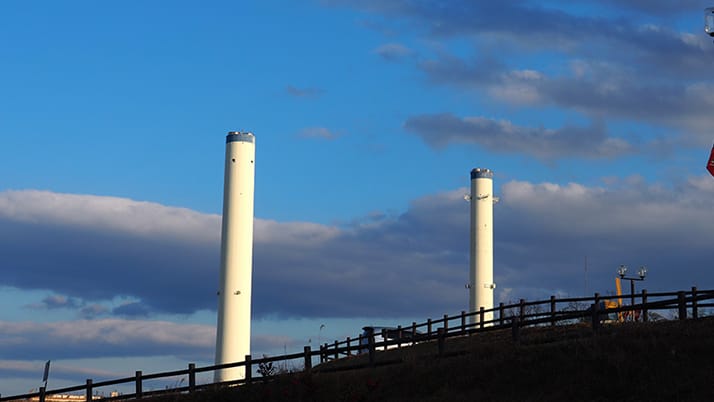
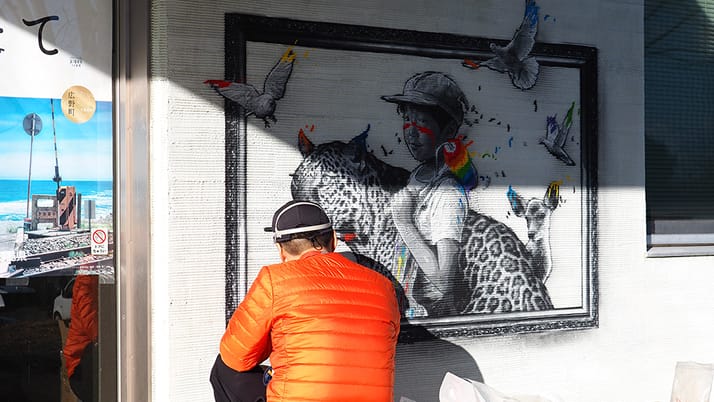
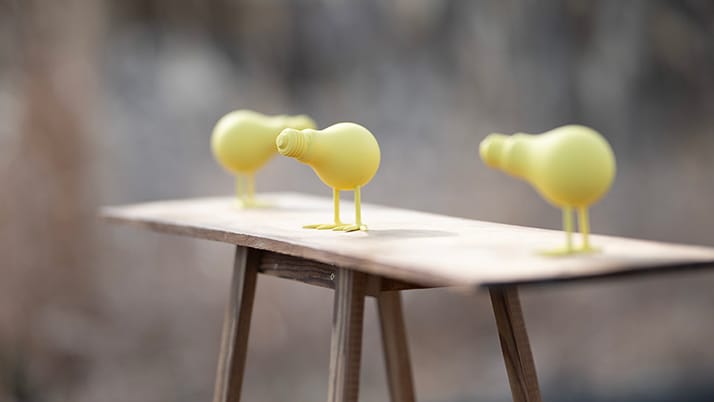
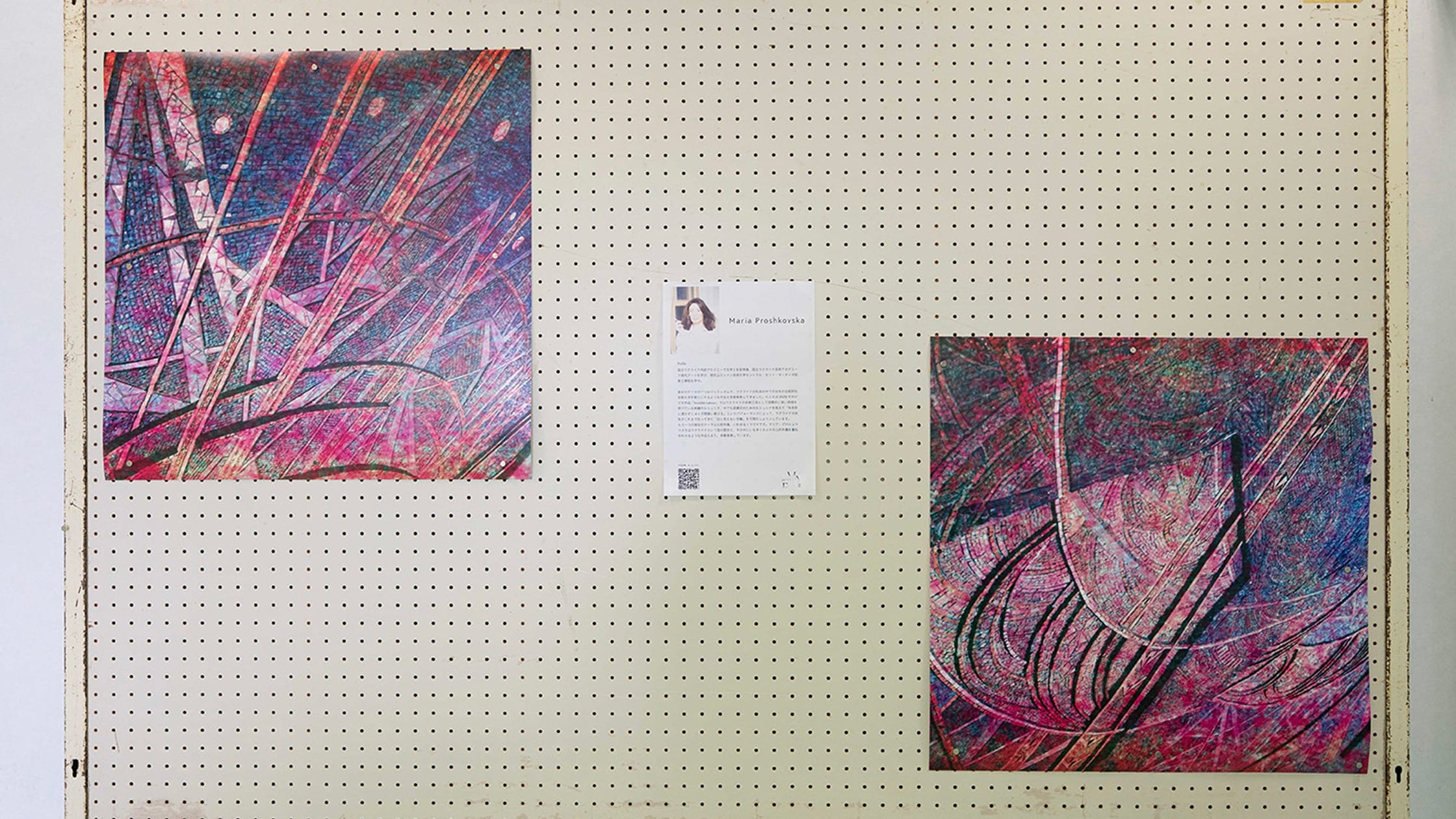
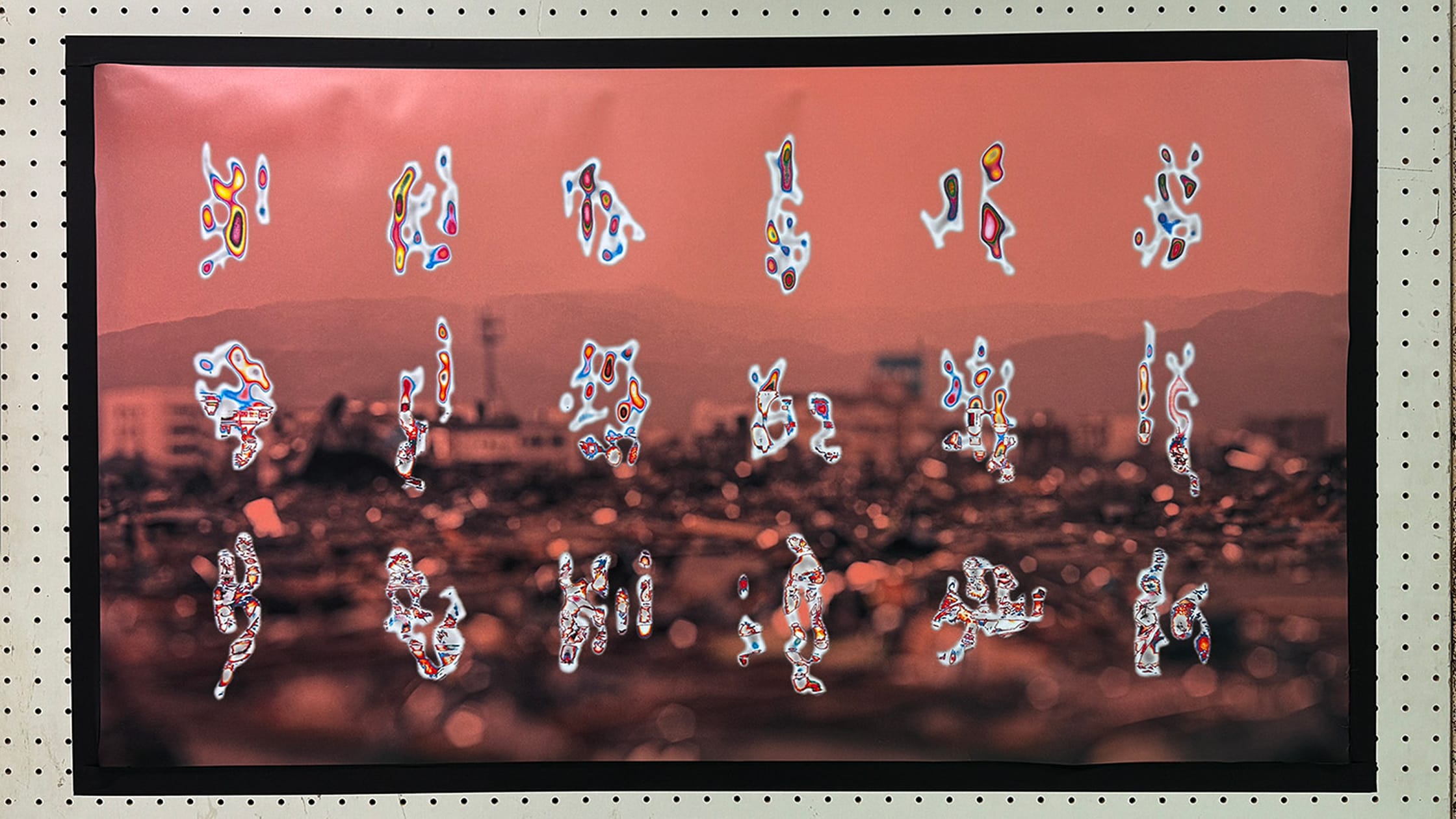
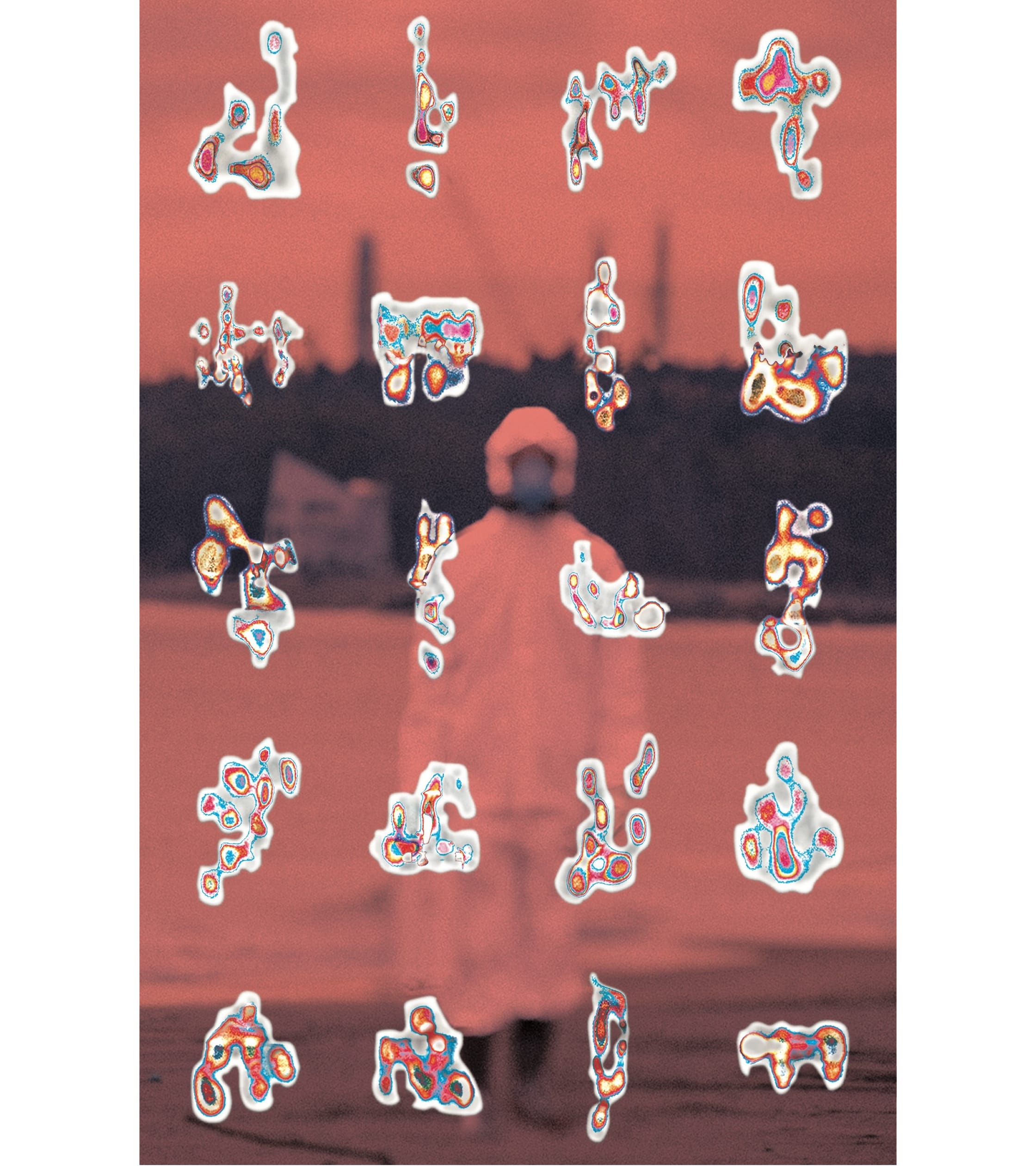
Director
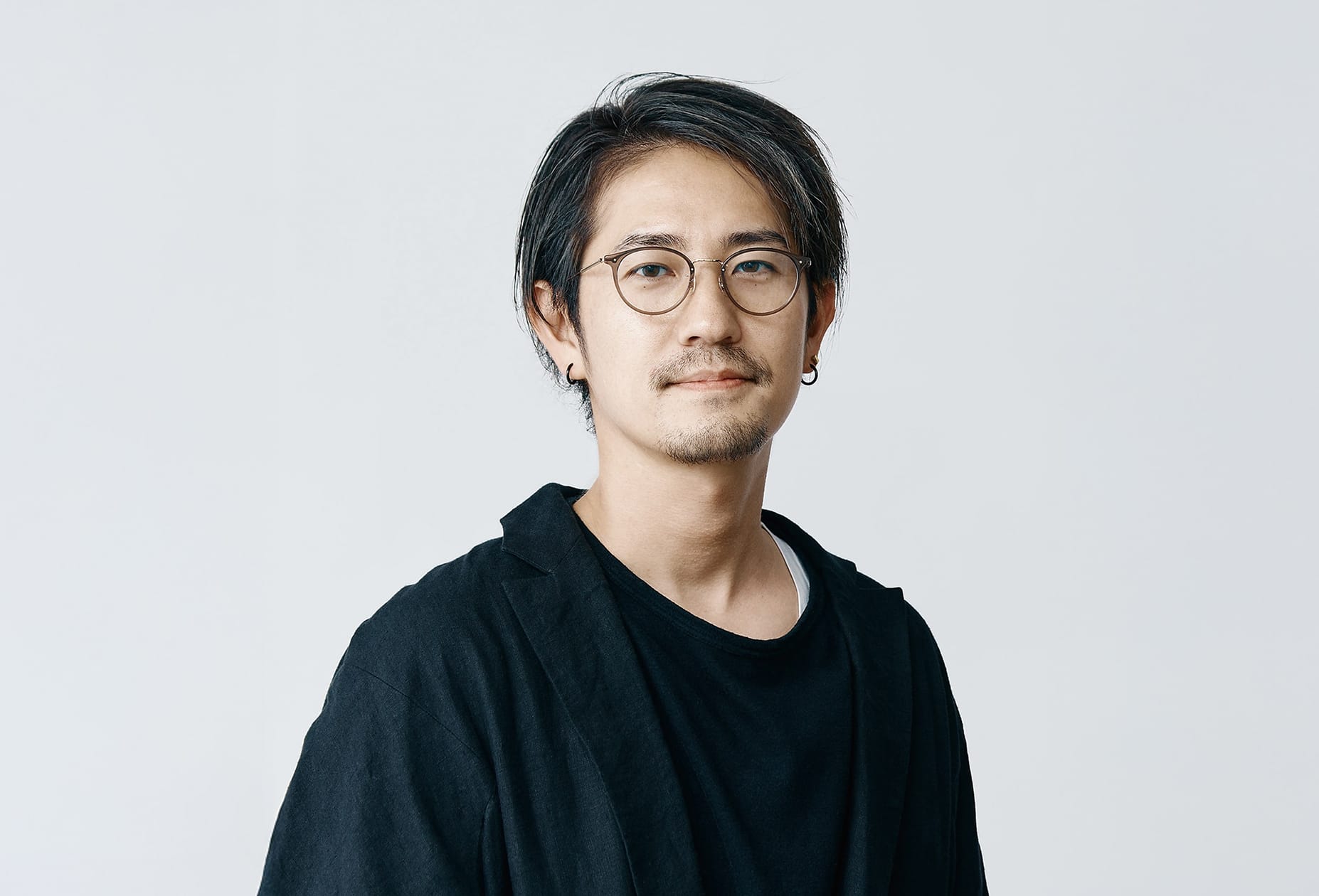
Seitaro Yamazaki
Seitaro Yamazaki is a contemporary artist and designer living and working in Tokyo.
Earning BA in Sociology from Rikkyo University in 2006 and a successful career as designer in the fields of graphic design, product design, spatial design, he earned MFA in Architecture from Kyoto University of Arts in 2016.
Since then, he has been creating contemporary art works in the fields of sculpture, installation, video, painting, and media art (e.g. typeface set as art). His works were exhibited in London, NY, Venice, Washington DC, Nagasaki, Tokyo, Berlin, etc. He also commissioned artworks by companies such as Mitsubishi Estate in 2022, West Japan Railway Company in 2024, and he oversaw the design of the award ceremony for the Tokyo Olympic and Paralympic Games as director in 2019-21.
He has been trying to find and show the beauty of ambiguity, transience, and the things that were never depicted, spoken, or formed in his works. Recently he focused on sonographs as sources of his art.
He also studied ink wash painting under Tsuchiya Shukou, along the lines of 18th Century Japanese painter Maruyama Okyo, and Ikebana of Obara school under Toru Watarai.
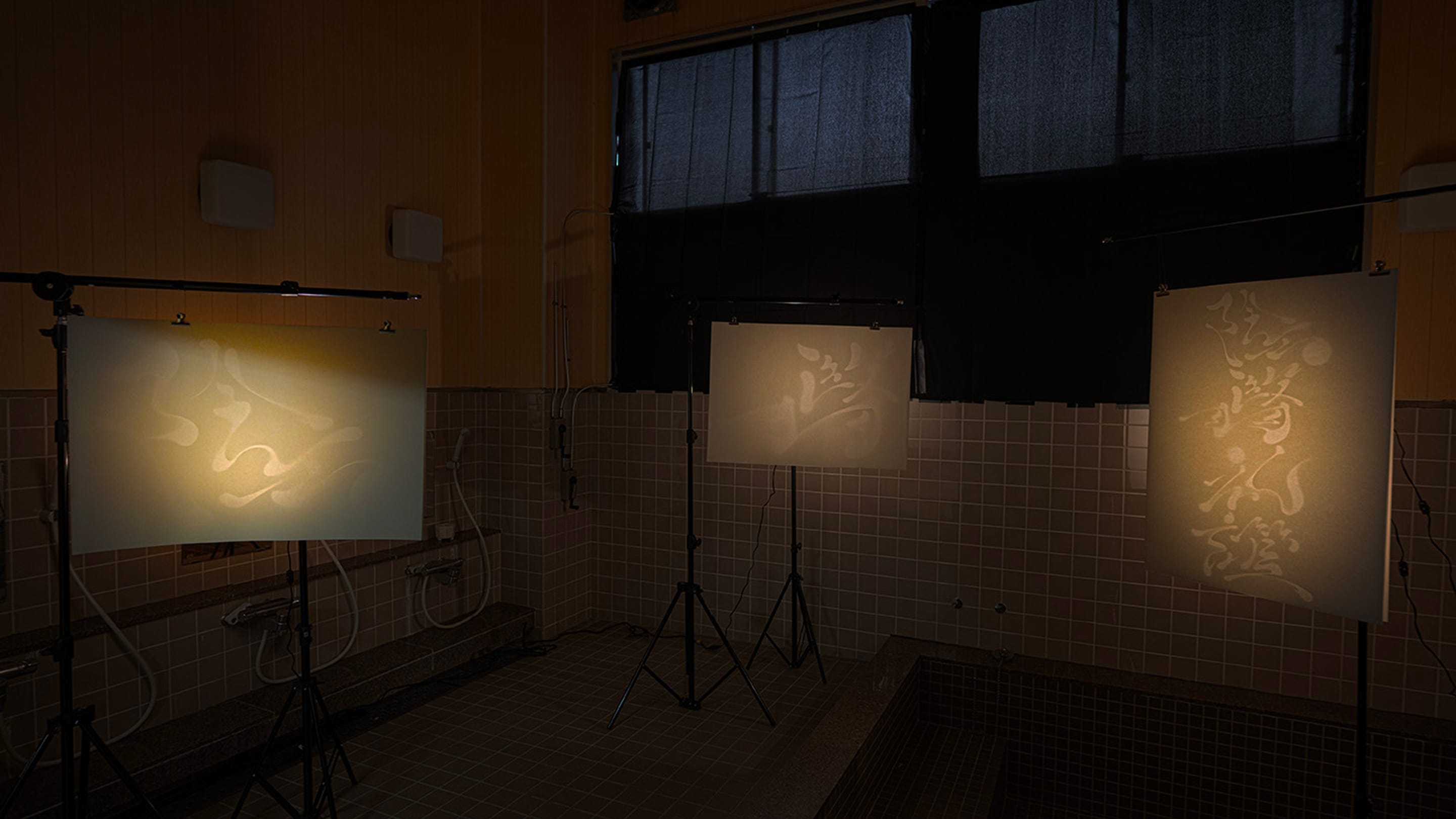
A message from Director
This time, through a strange coincidence, I have decided to hold an art fair in Hirono Town of Fukushima.
I am Seitaro Yamazaki, the director. I run a company called Seitaro Design in Tokyo that does design, branding, video production, etc. I usually call myself a creative director, but in places where I can introduce myself a little more politely, I call myself a creative director/artist. It has been six years since I stepped into the world of creating contemporary art.
I believe the first seeds of the art fair were planted in Hirono Town when Seitaro Design did the branding for the Solare Hotels and Resorts' Hatago Inn hotel brand. One of the three current Hatago Inns is located in front of Hirono Station.
Following on from the Hirono International artist-in-residence "TORIGOYA 2023-24" program, people of Hirono town were looking for the next step in branding the town through art, and they contacted me asking if I would like to take on an art project as the contemporary artist Seitaro Yamazaki, so I agreed to serve as the director of the art fair.
So, what kind of art fair should be held in Hirono town?
Looking back at history, it seems that it was once a very deprived area, where it was common for adults to go to work away from home in the winter. Then, during the period of high economic growth, several power plants were built along the coast of Fukushima, and the town began to develop as a commuter town for the neighboring city of Iwaki.
Then the Great East Japan Earthquake hit the town. The entire town of Hirono was also placed in an emergency evacuation zone due to the nuclear accident. But on September 30, 2024, it was 13 years since the evacuation order was lifted, and it is said that 90% of the town's residents have now returned to the town. Due to these circumstances, Hirono became a frontline base for the recovery from the disaster and has played a major role in the efforts to revive this region from the scars of the tsunami and nuclear accident. Many people will remember that J Village in the northern part of the town once attracted worldwide attention as a base for responding to the nuclear accident.
On the hill overlooking Hatago Inn Fukushima Hirono is Fukushima Prefectural Futaba Future School. This high school was established so that children who returned to Futaba County could continue their education while prefectural high schools in the county were forced to continue evacuating due to the effects of the disaster.
"A place full of yohaku for giving birth to the future."
That was my honest impression. The word "yohaku" was originally created as a translation of "margin" when Western bookmaking techniques were imported to Japan. It refers to the blank areas around the pages. Eventually, this word came to be used as a keyword when talking about Japanese traditional art. Originally, in Japanese art, there were many areas that were left blank without any elements, but this also came to be called "yohaku."
Yohaku in the Japanese aesthetic is different from the Western "blank space." It is not a place with nothing, but a place from which various things spring up whenever people look at it.
To be honest, I didn't know much about Hirono Town until the international artist in residence program conducted last year. However, when I actually looked there, it was a land that was not blank but like a margin, a land where various things spring up whenever I looked at it.
In the art world, there are works that are considered to be genuine contemporary art. They are at the center of the art world. And where there is a center, there is also a periphery. As Ernst Gombrich points out in the final chapter of "The Story of Art," the history of art is a repetition of things that emerge from the periphery being recognized as the center of the art of the next era. Baroque painting, Romantic painting, Impressionism, Cubism, Fauvism, Surrealism, Minimalism, Street Art, Photography, Film, Media Art. None of them were at the center of art from the beginning.
So, in this "marginal" art fair, we hope that not only works that are already at the center of art, but also many works that are still in the "margins of art" will participate. The Western word "margin" is the origin of the word "yohaku." The adjective of "margin" is "marginal." It means "on the periphery," "in the border area," or "belonging to two cultures but not fully assimilated into either."
Director
Seitaro Yamazaki
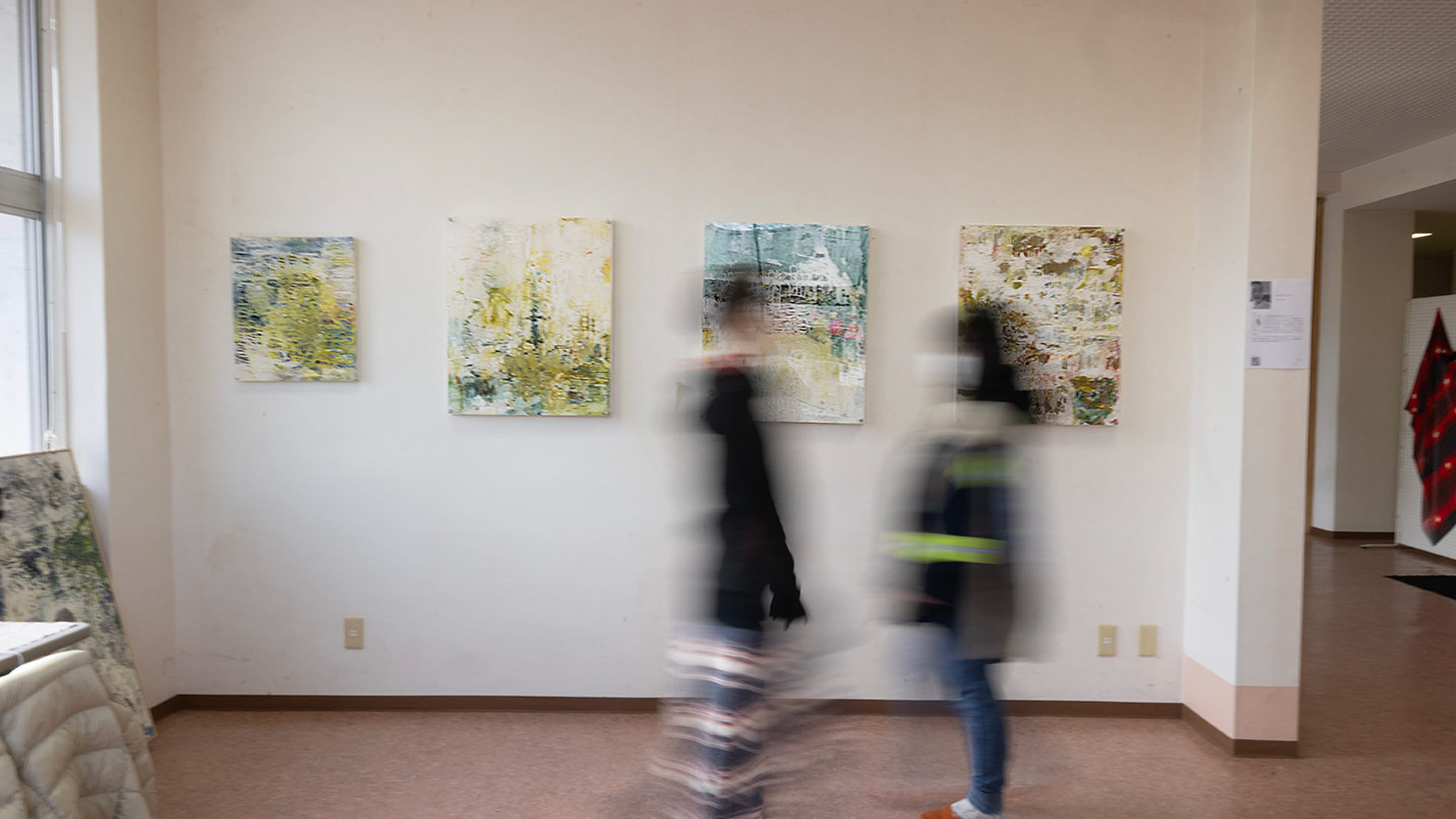
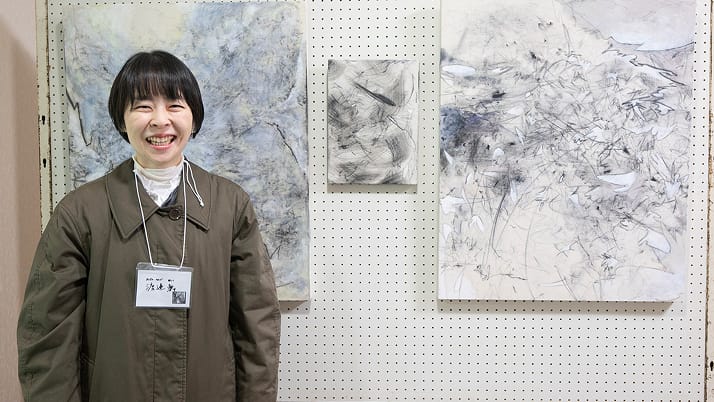
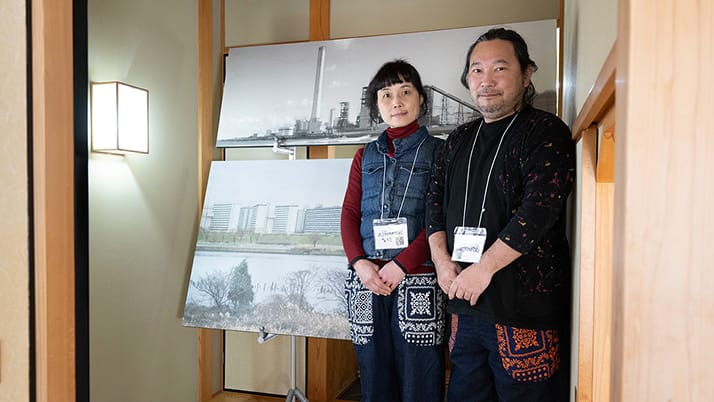
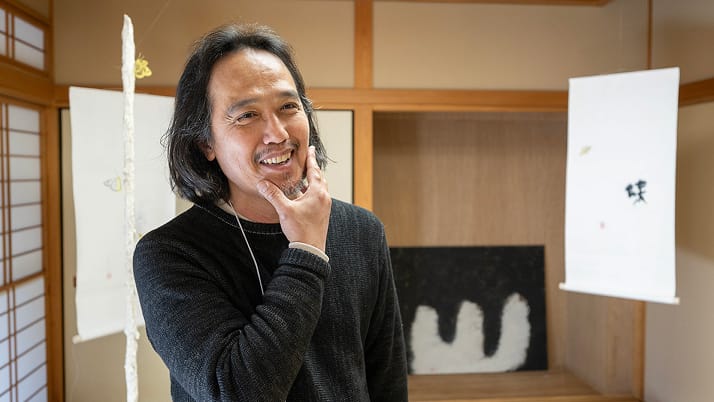
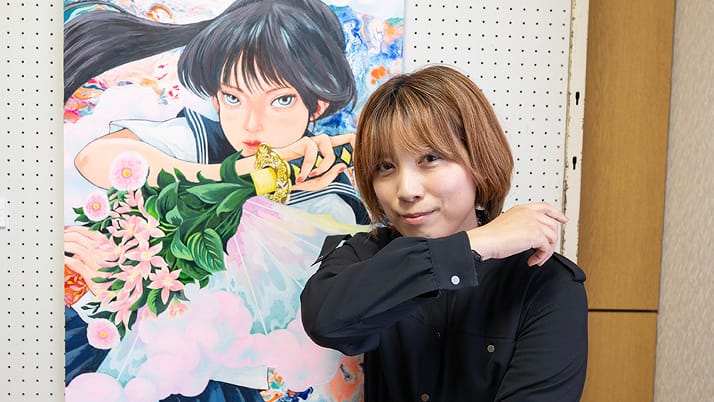
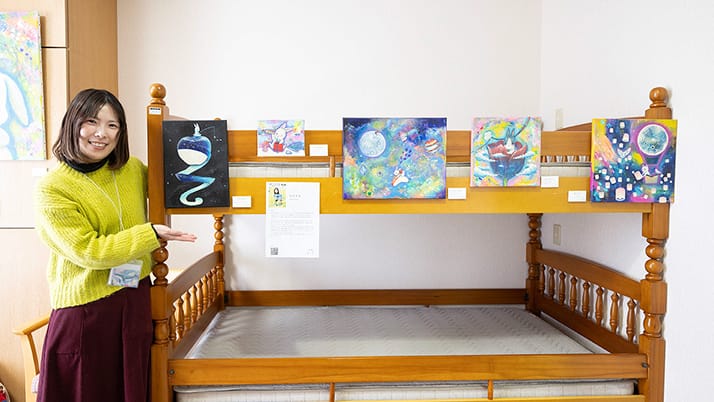
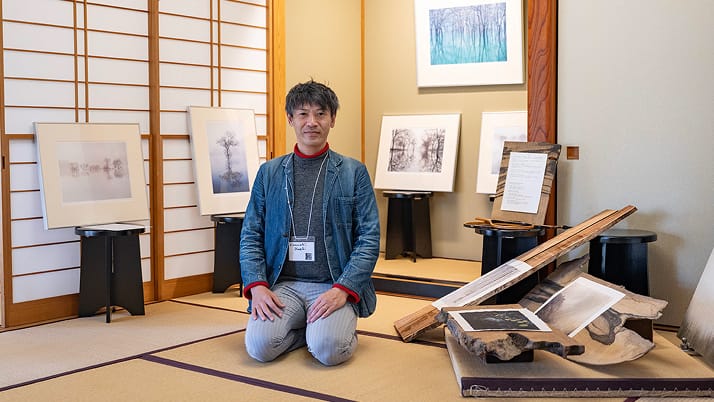
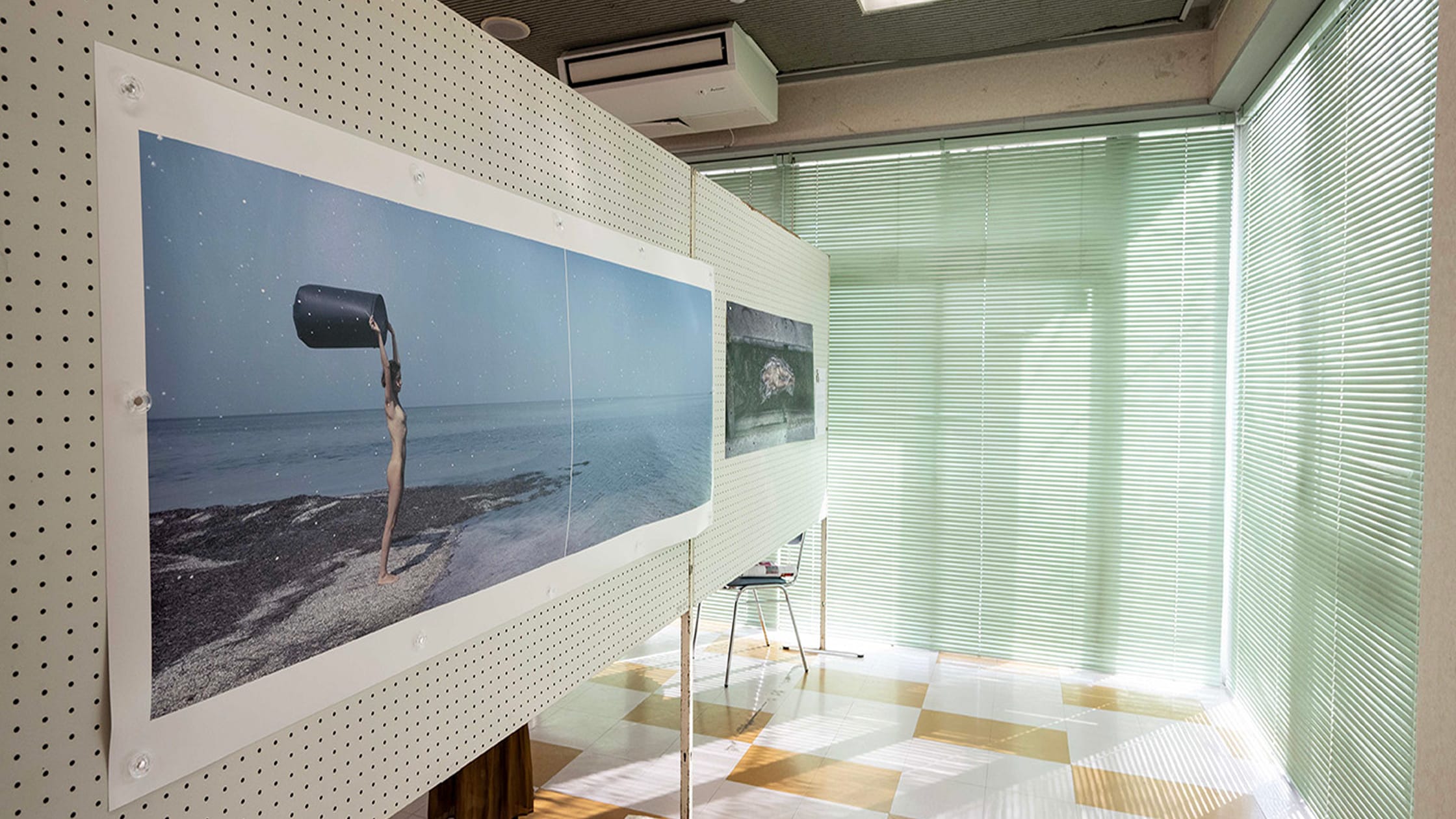
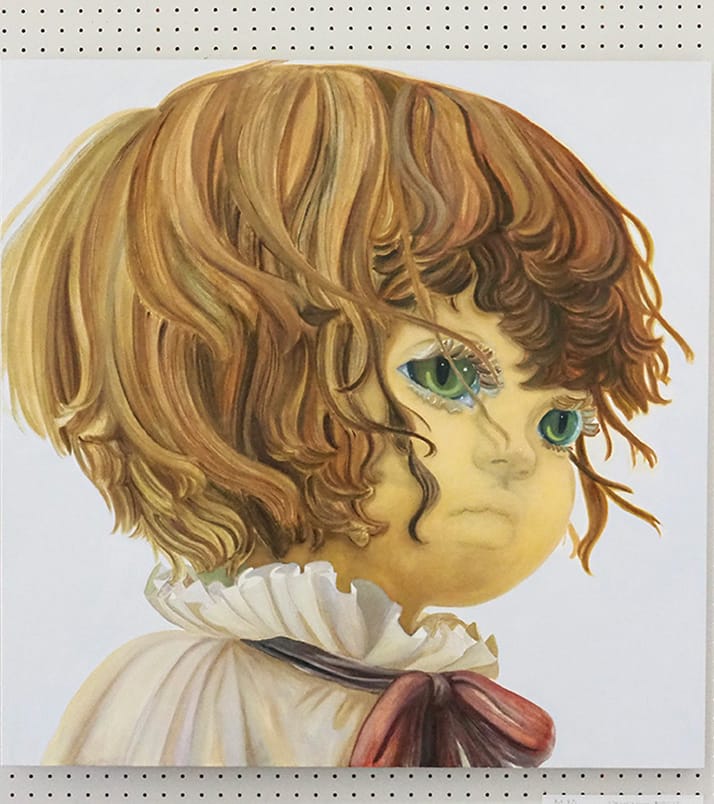
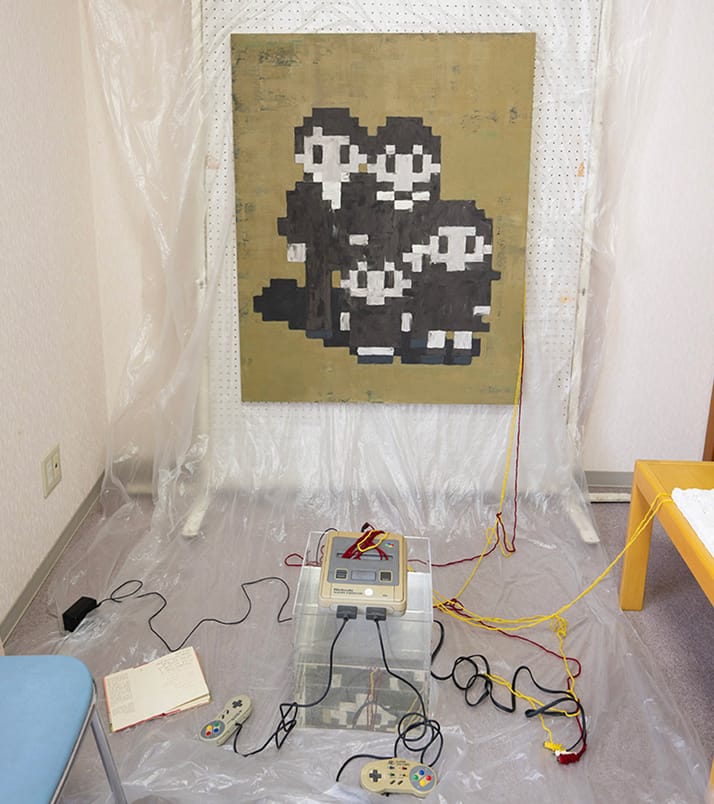
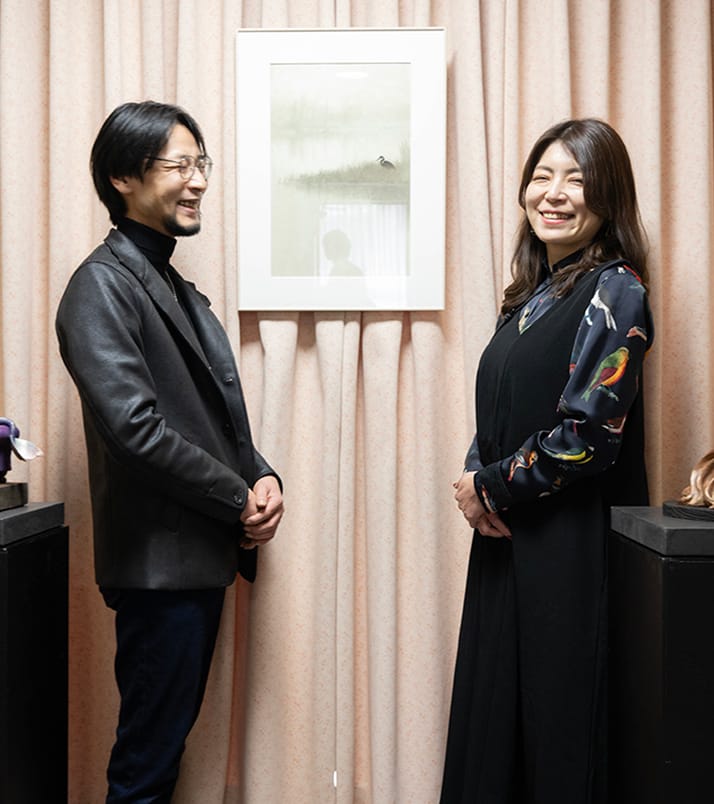
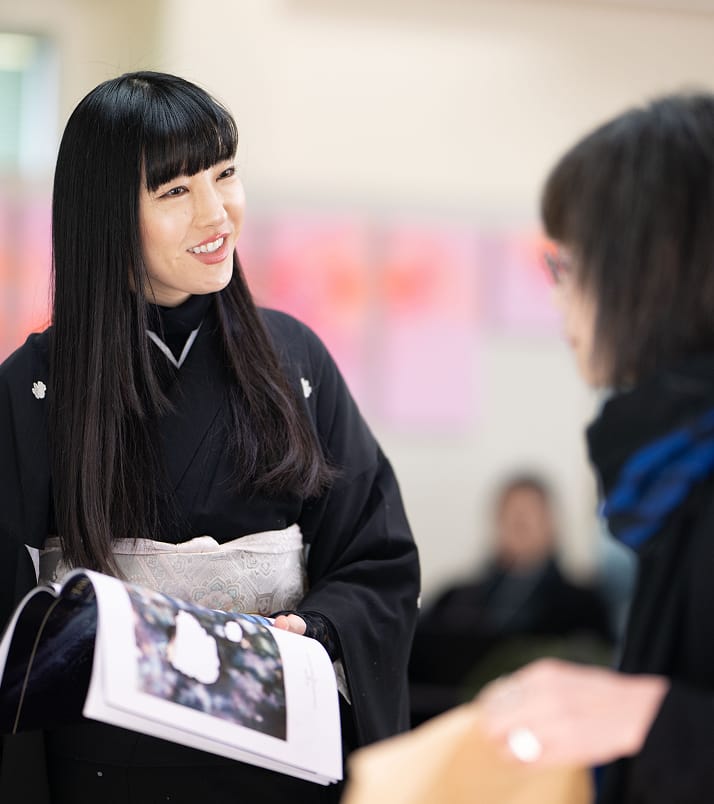
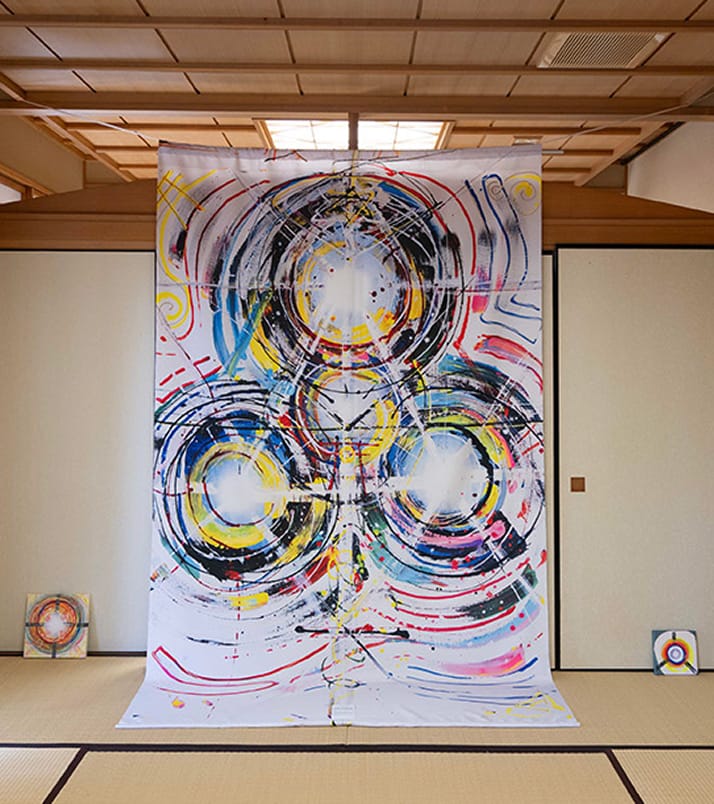
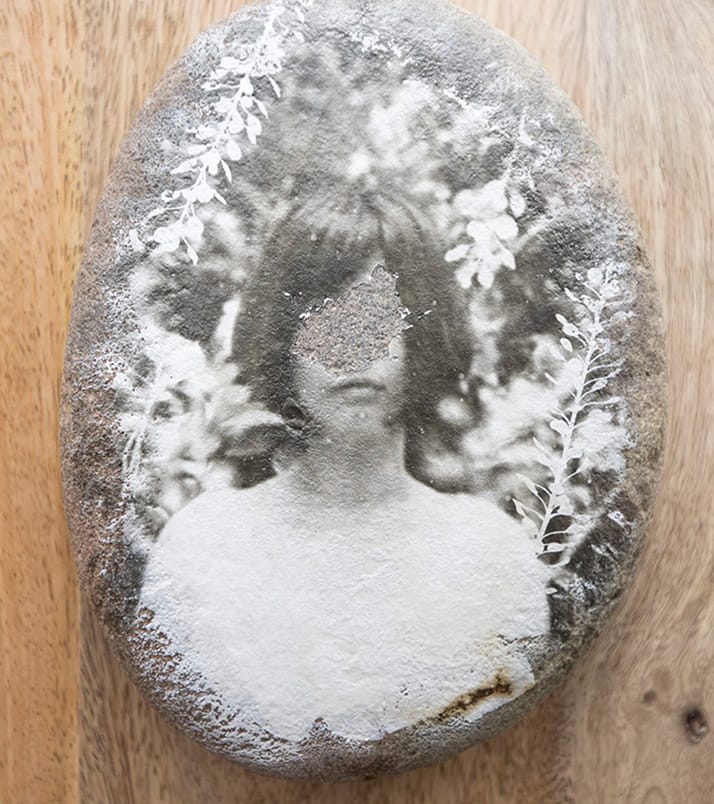
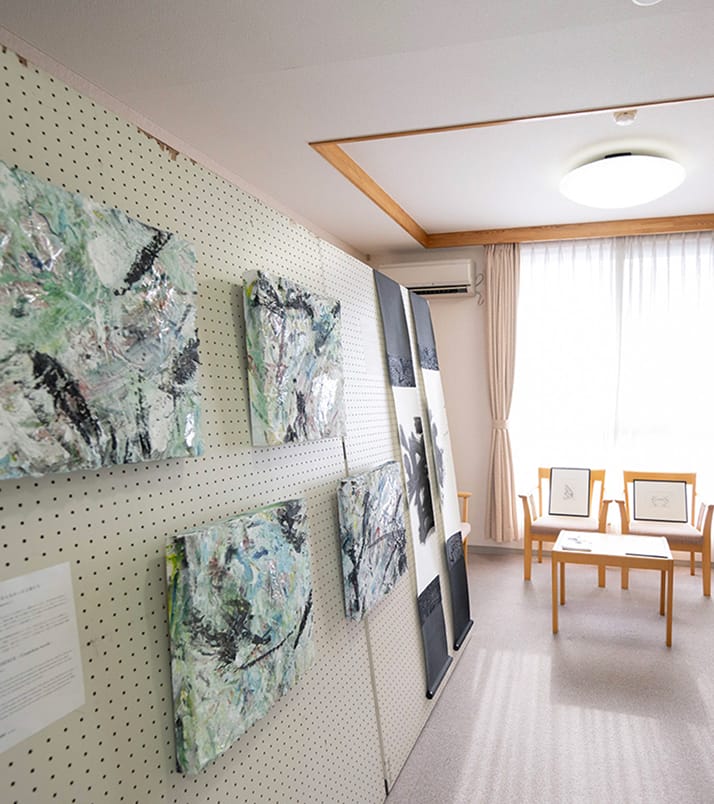
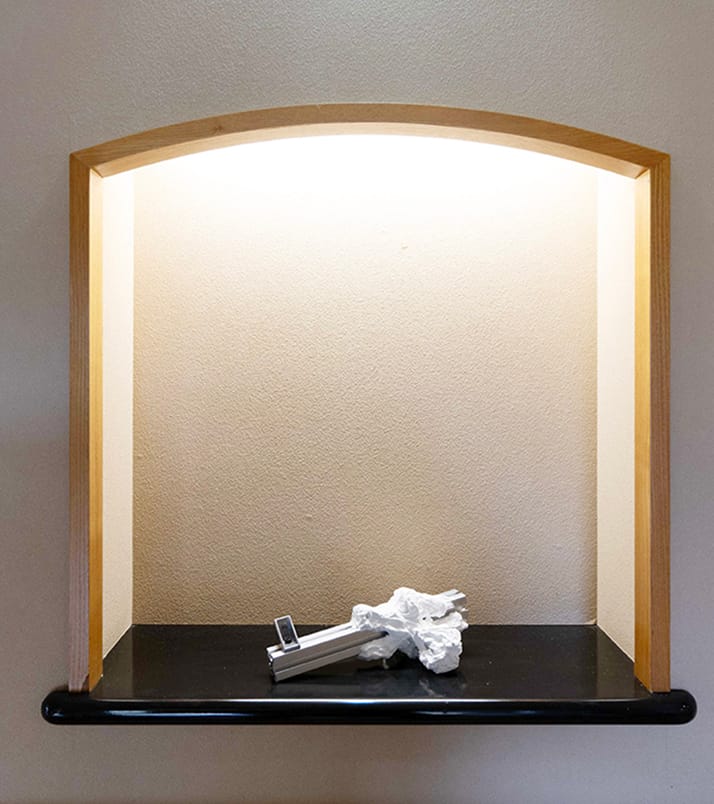
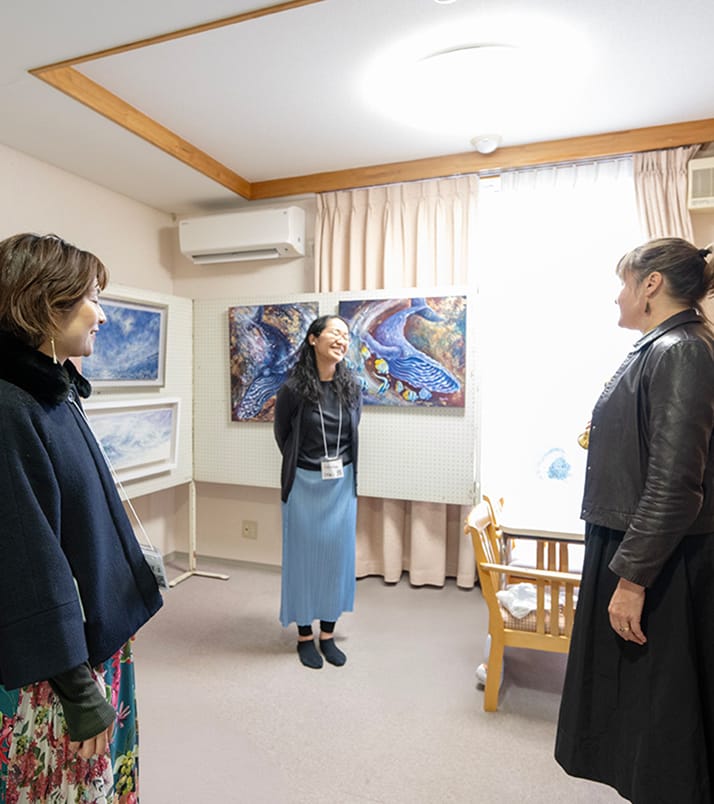
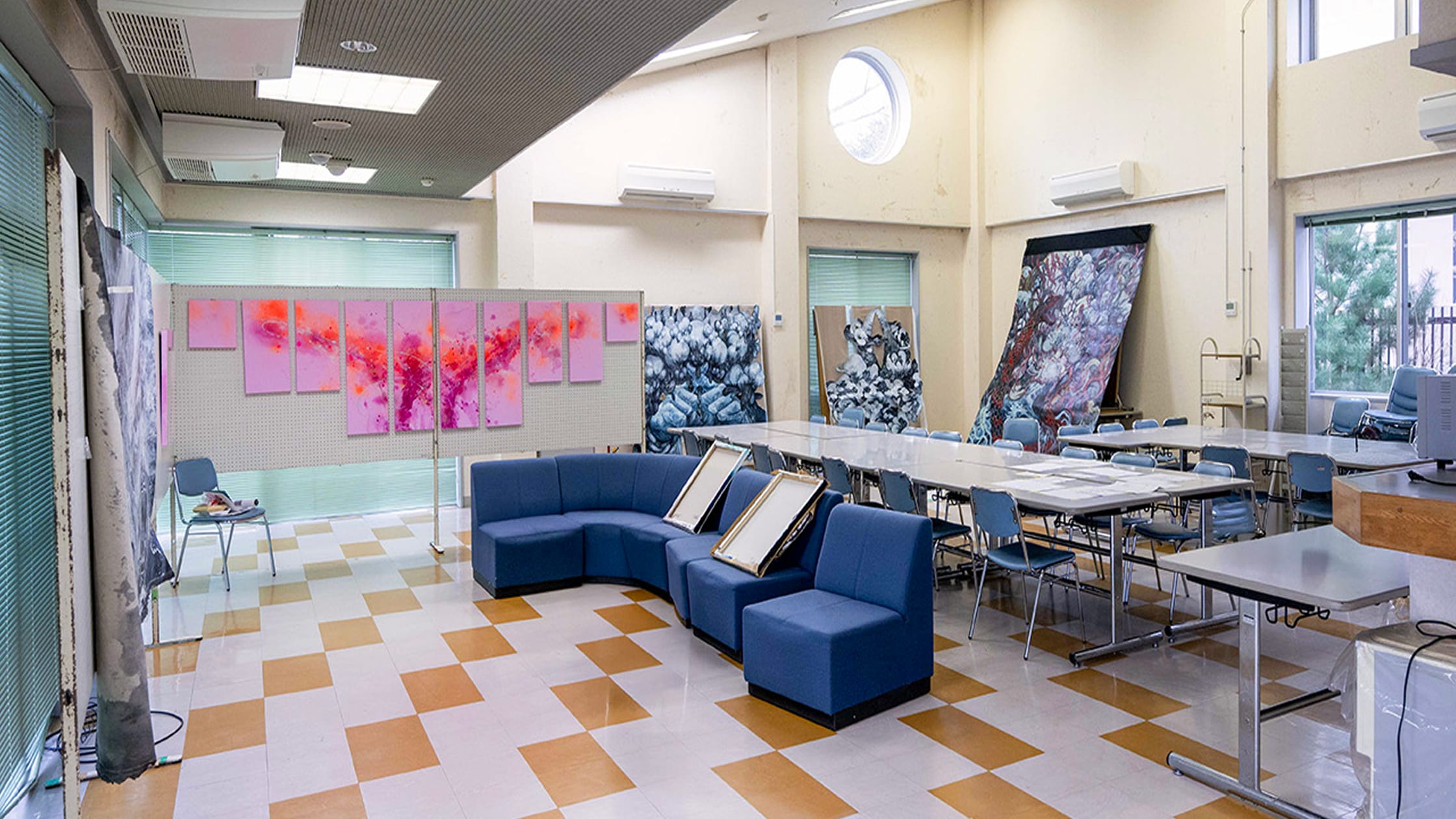
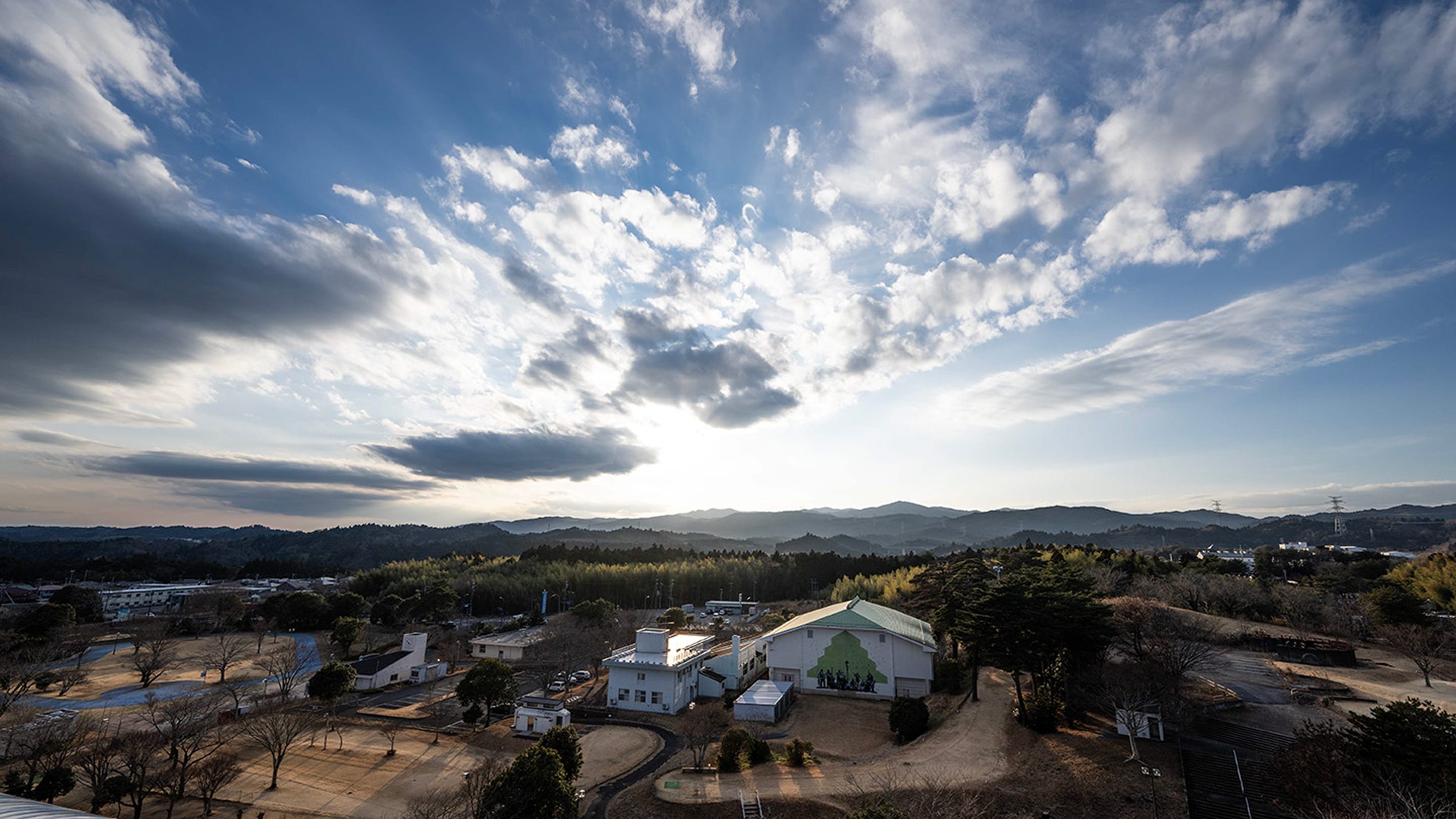
Information
- Title:
- "Marginal Art Fair Fukushima Hirono 2025"
- Date:
- January 25 (Sat) - 26 (Sun), 2025
- Opening Hours:
-
January 25 (Sat) 9:30 AM - 4:00 PM
January 26 (Sun) 9:30 AM - 3:00 PM
- Tickets:
-
General / 1-day ticket: ¥550 in advance / ¥600 on the day
General / Pass: ¥880 in advance / ¥900 on the day
*Free admission for high school students and younger.
*Pass tickets allow unlimited admission for two days during the event.
*All prices include tax.
- Venue:
-
Hirono Town Futatsunuma General Park "Training Camp Inn" "Seimeikan" and its surrounding areas
103-19, Oyachihara, Shimokitasako, Hirono-cho, Futaba-gun, Fukushima, 979-0402
- Organizer:
- Marginal Art Fair Fukushima Hirono Executive Committee
- Sponsorship:
- San-Ai Corporation / LEAP / TALKEYE Co.,Ltd. / Orimo / Advisor Biru-Man / Hatagoinn Fukushima Hirono
- Support:
- Hirono Town / Hirono shinko-kosha / Hirono Town Chamber of Commerce and Industry, Hirono Town Tourism Association / Fukushima Prefecture / Embassy of Ukraine in Japan
- Related Link:
- https://artfairhirono.com/en